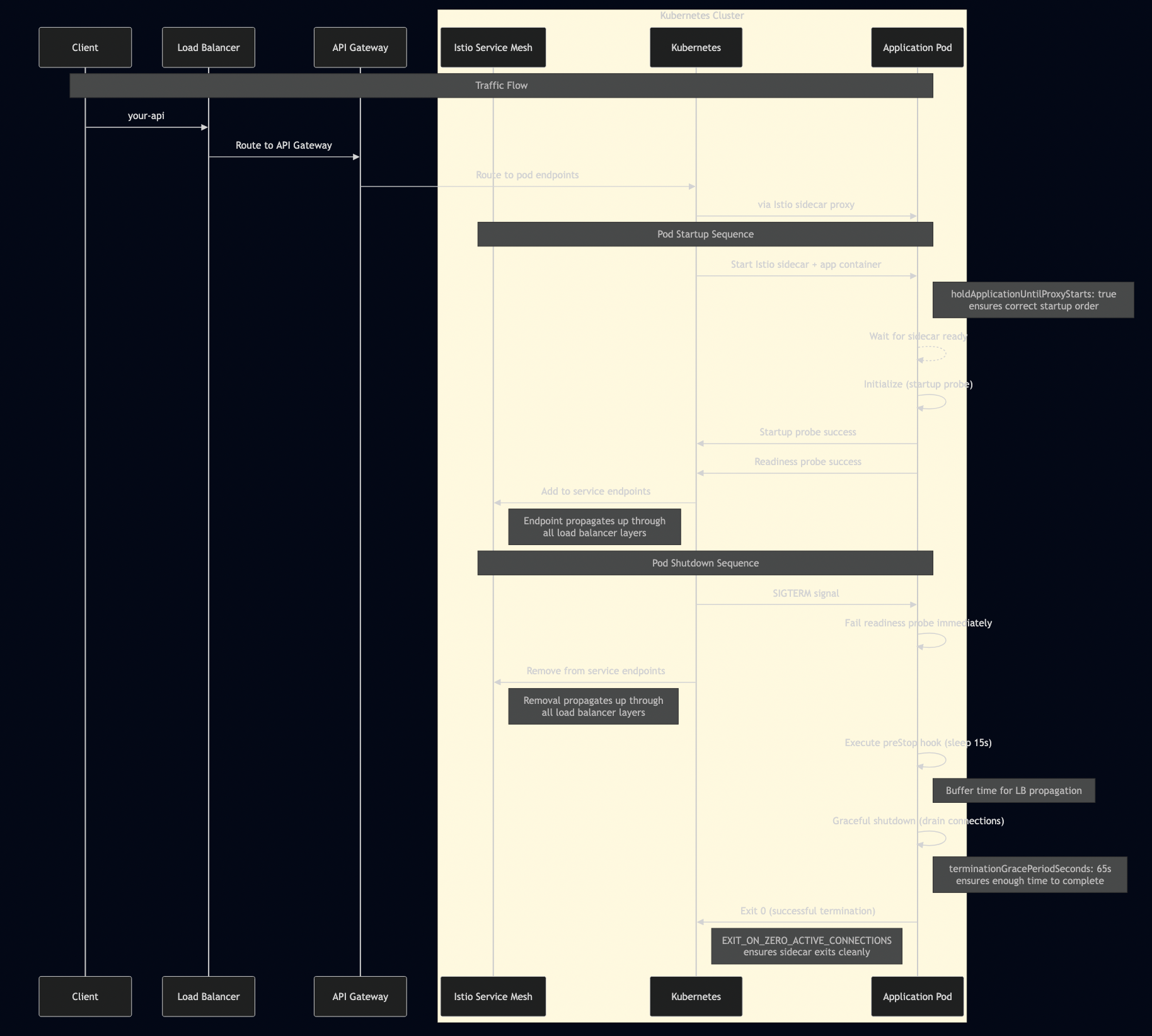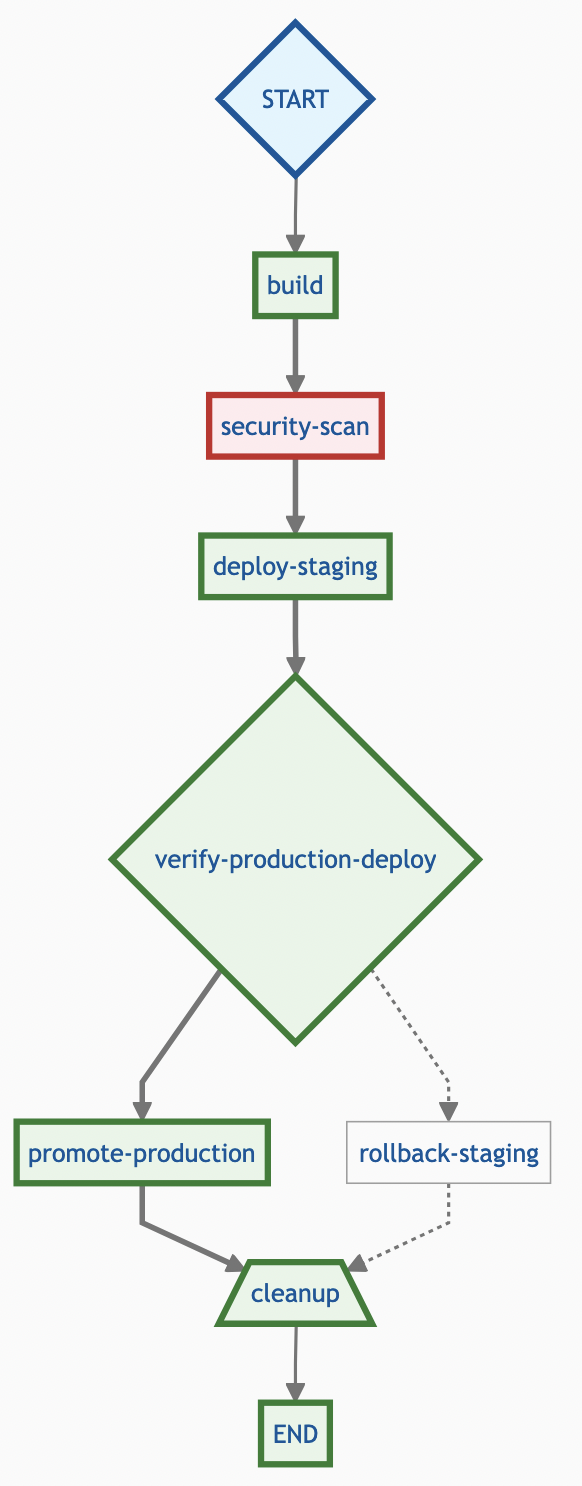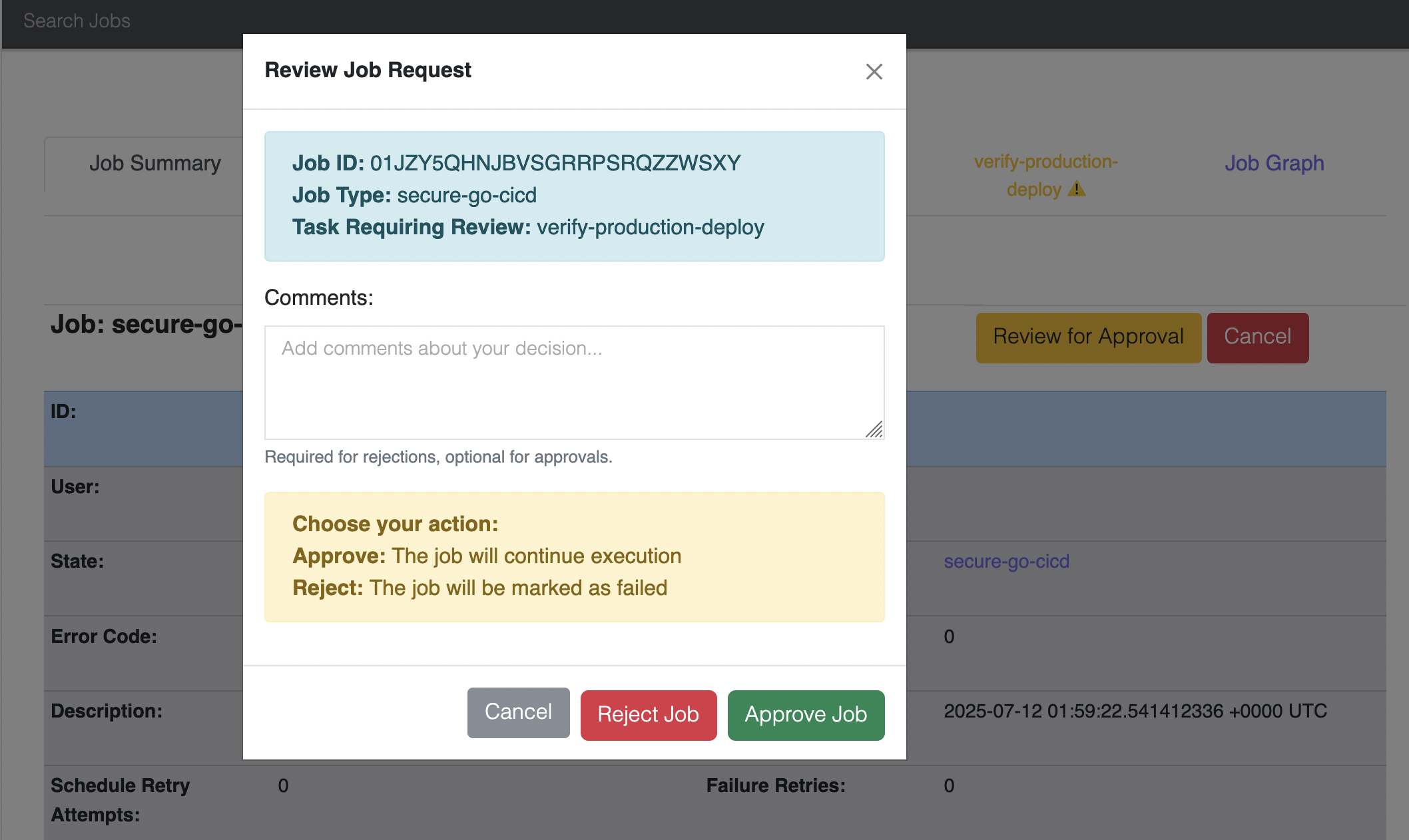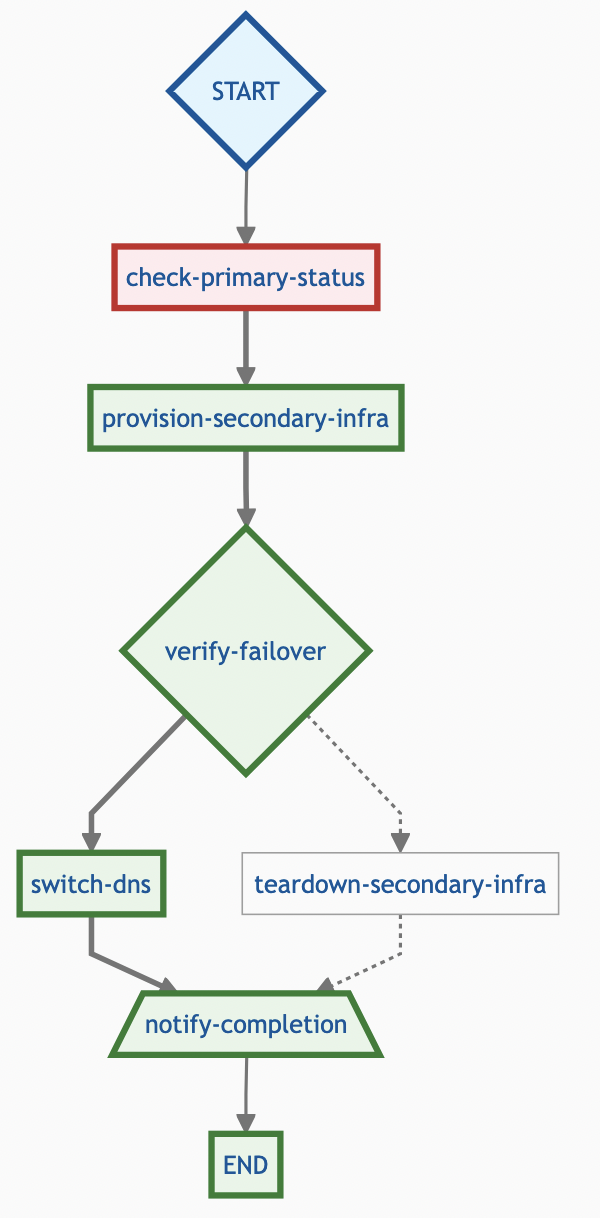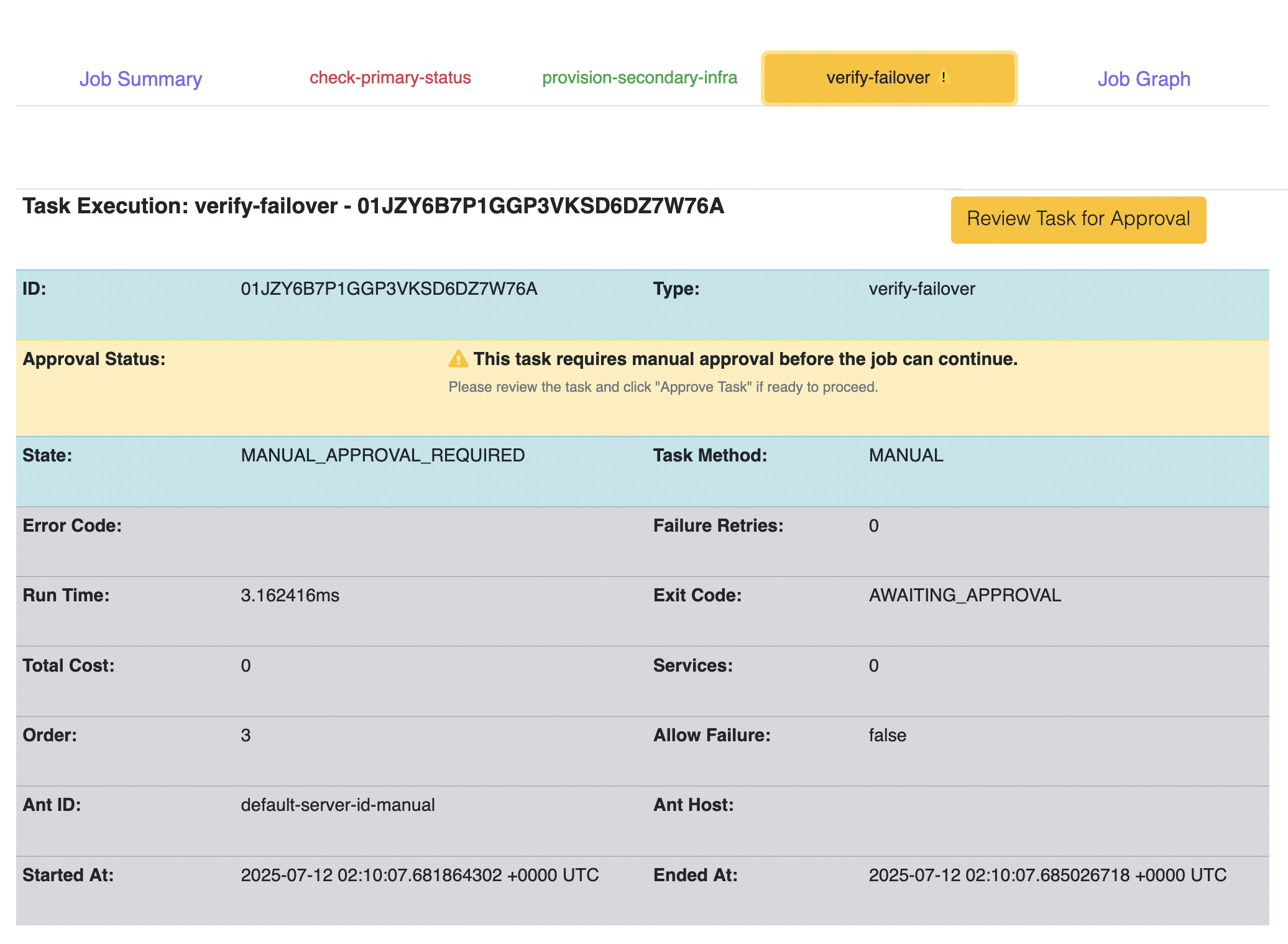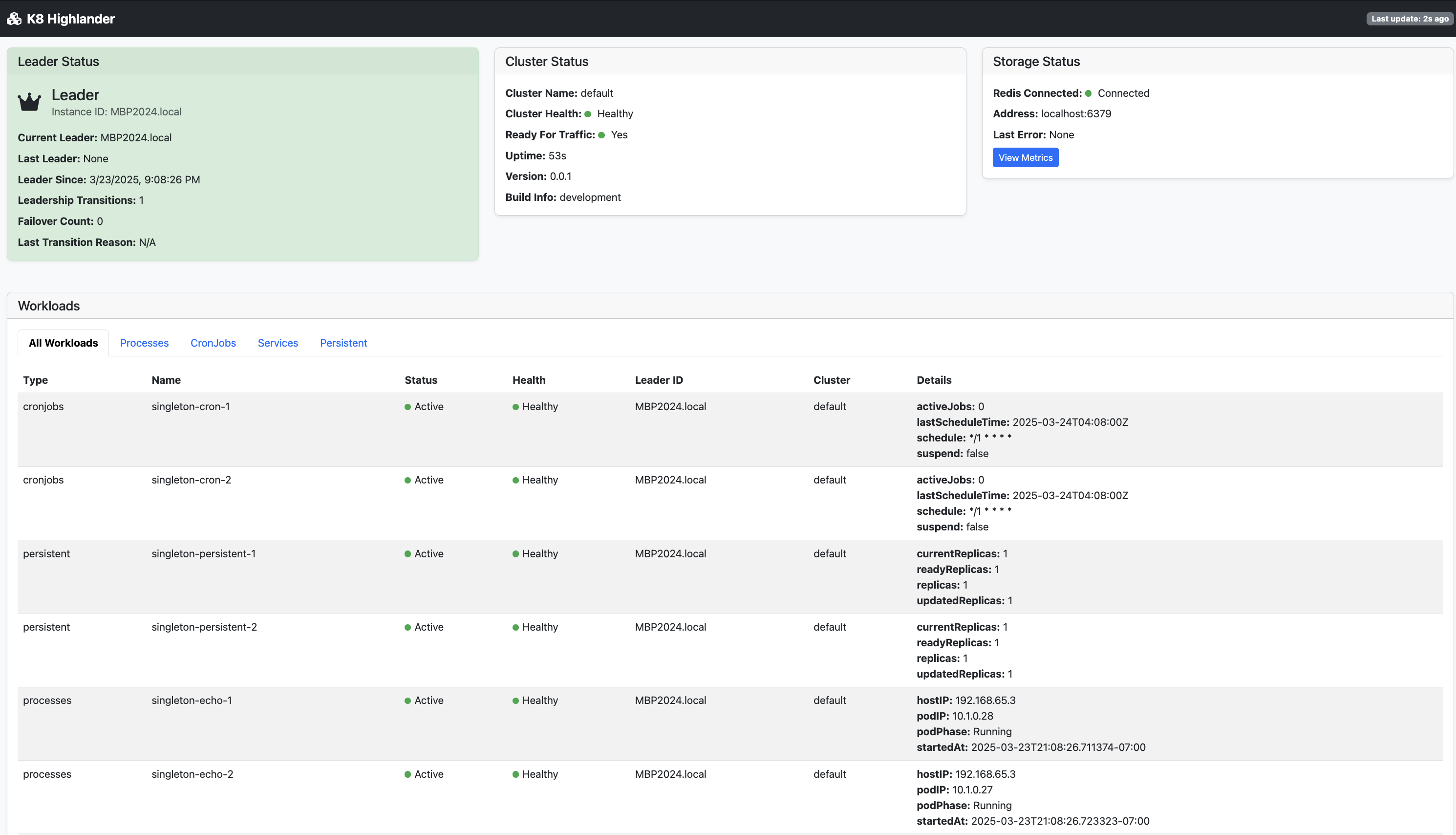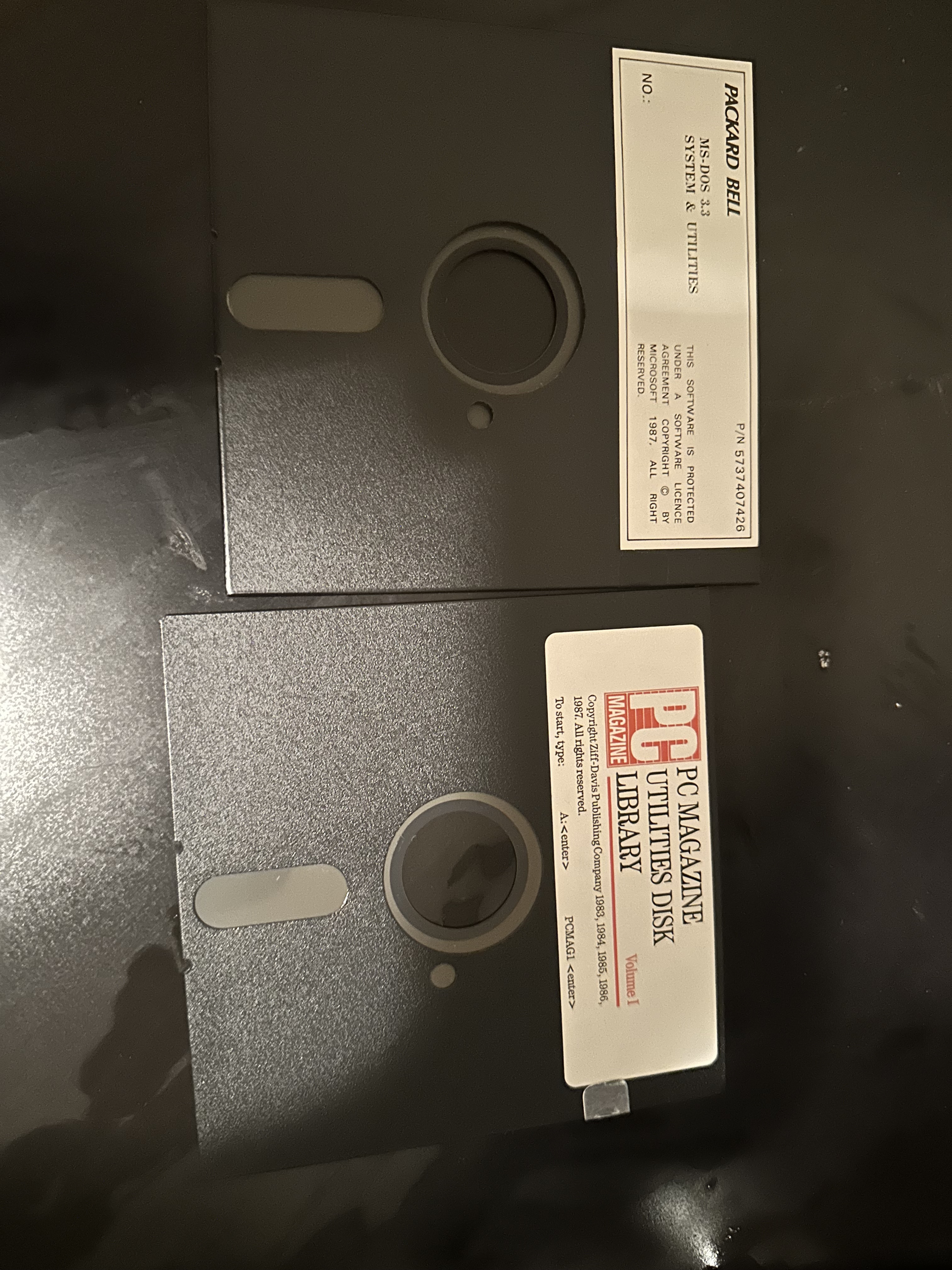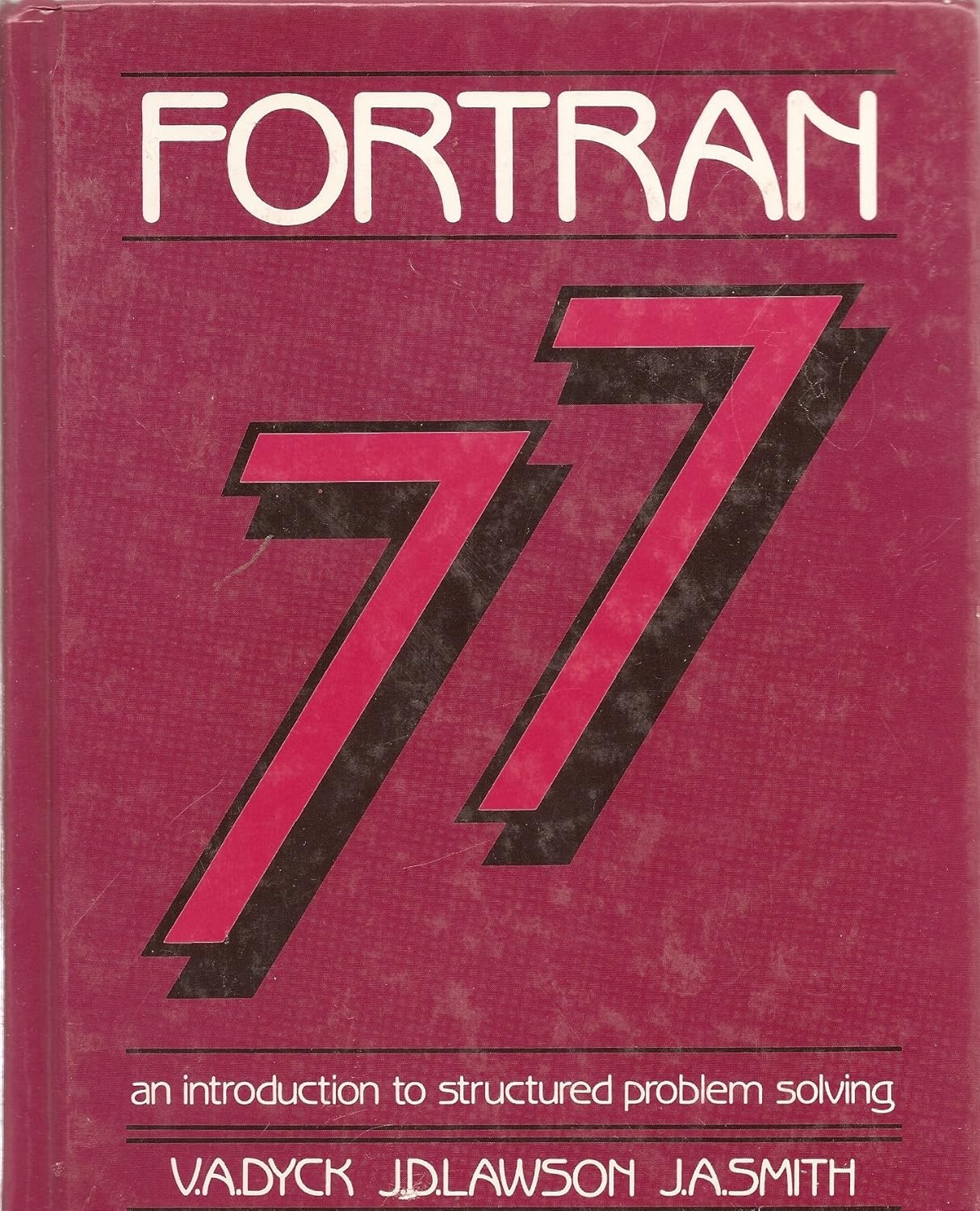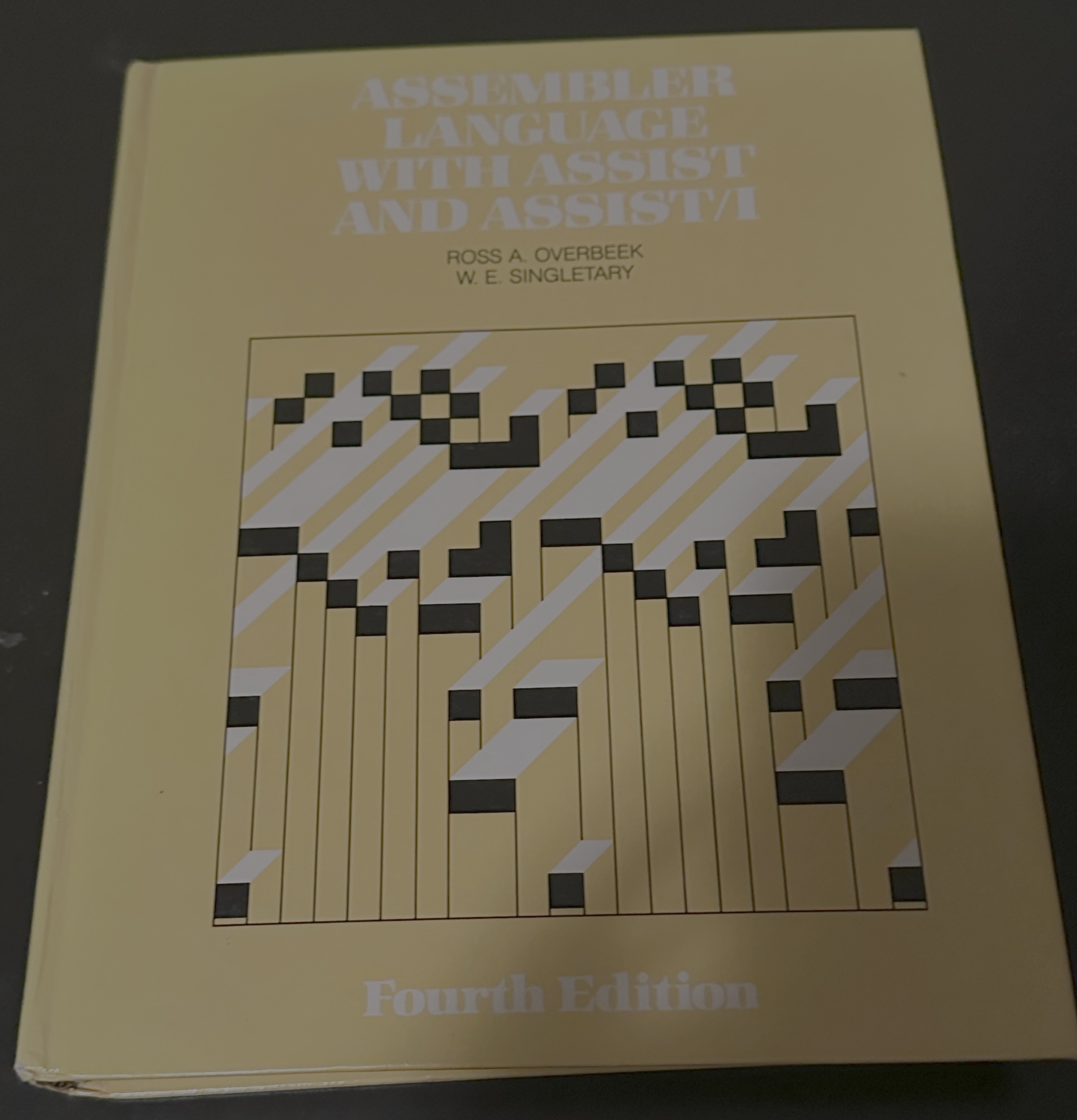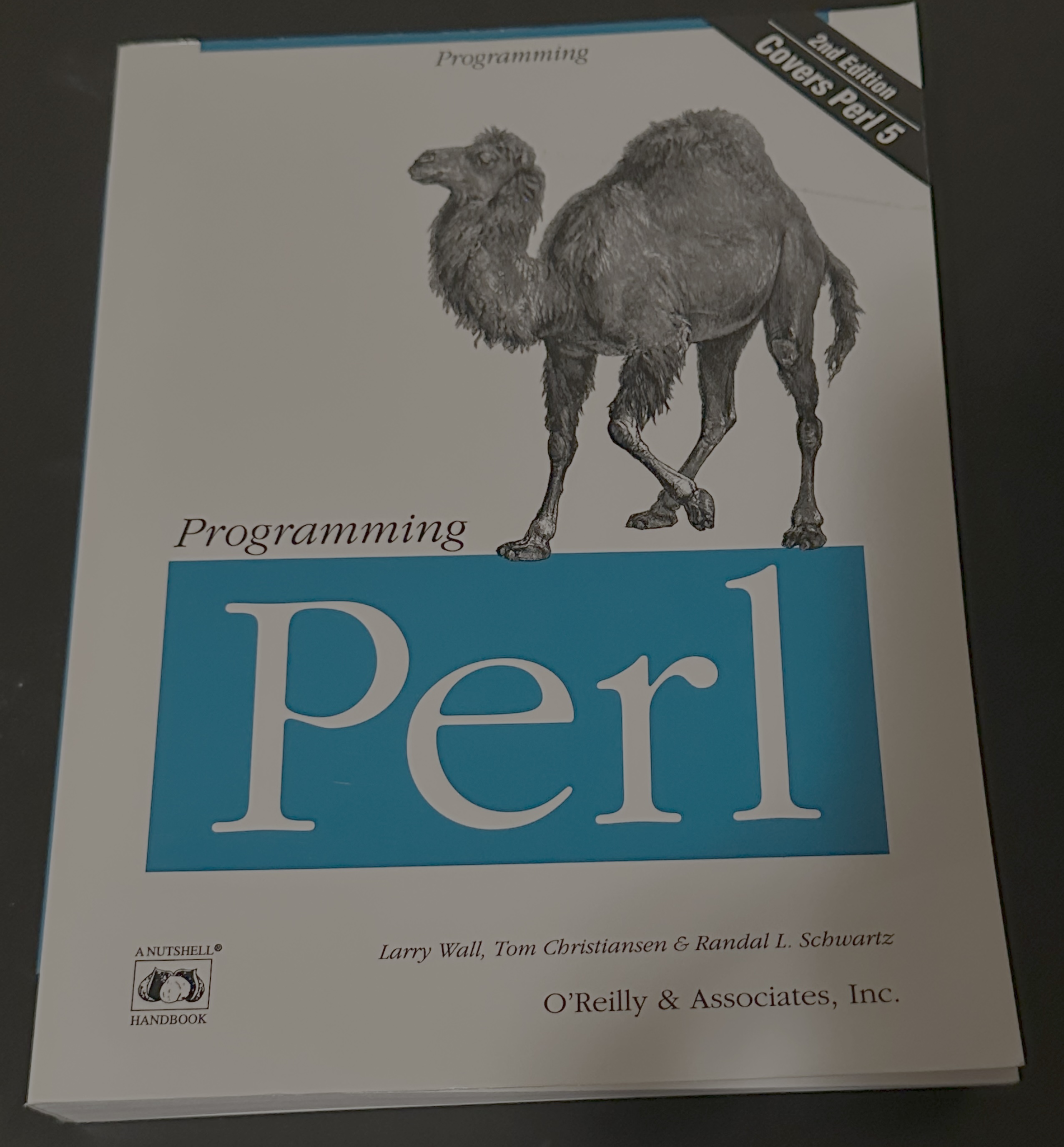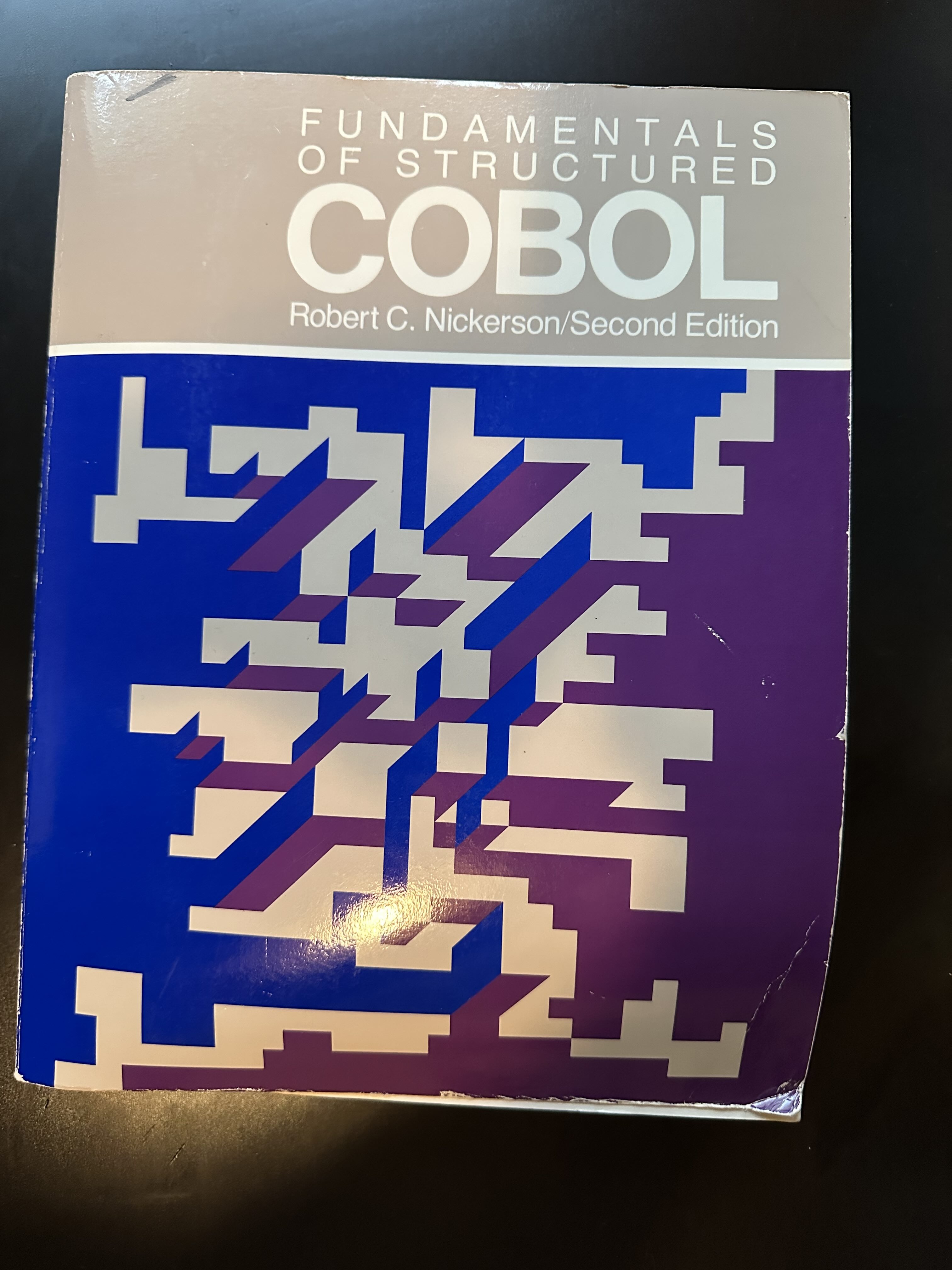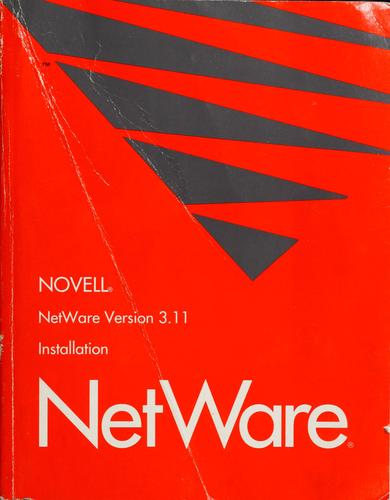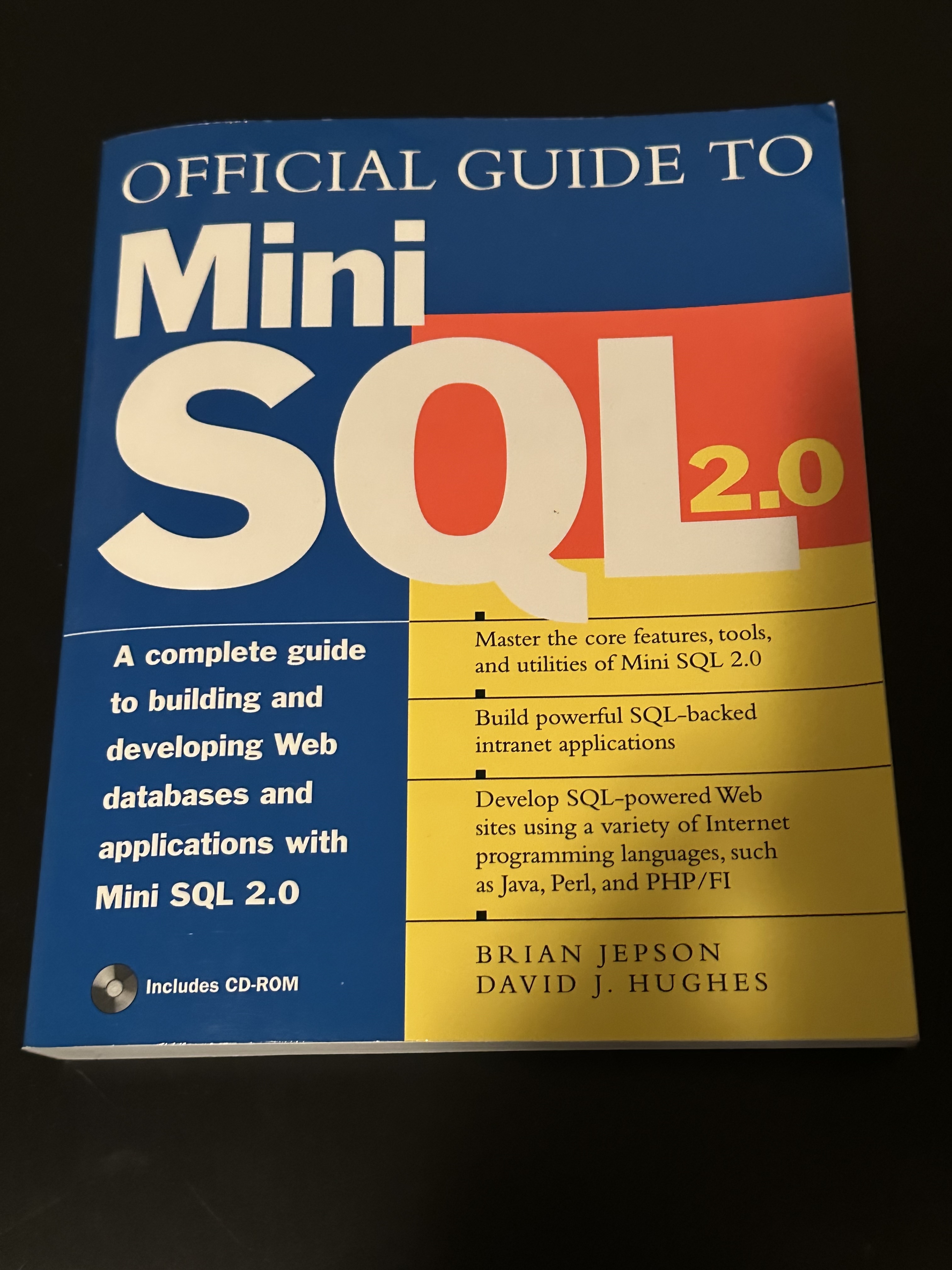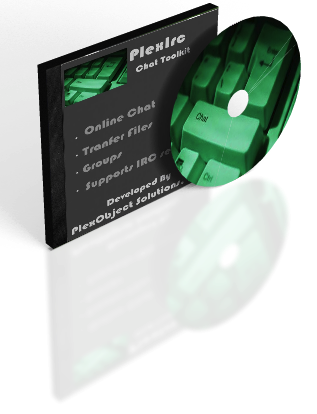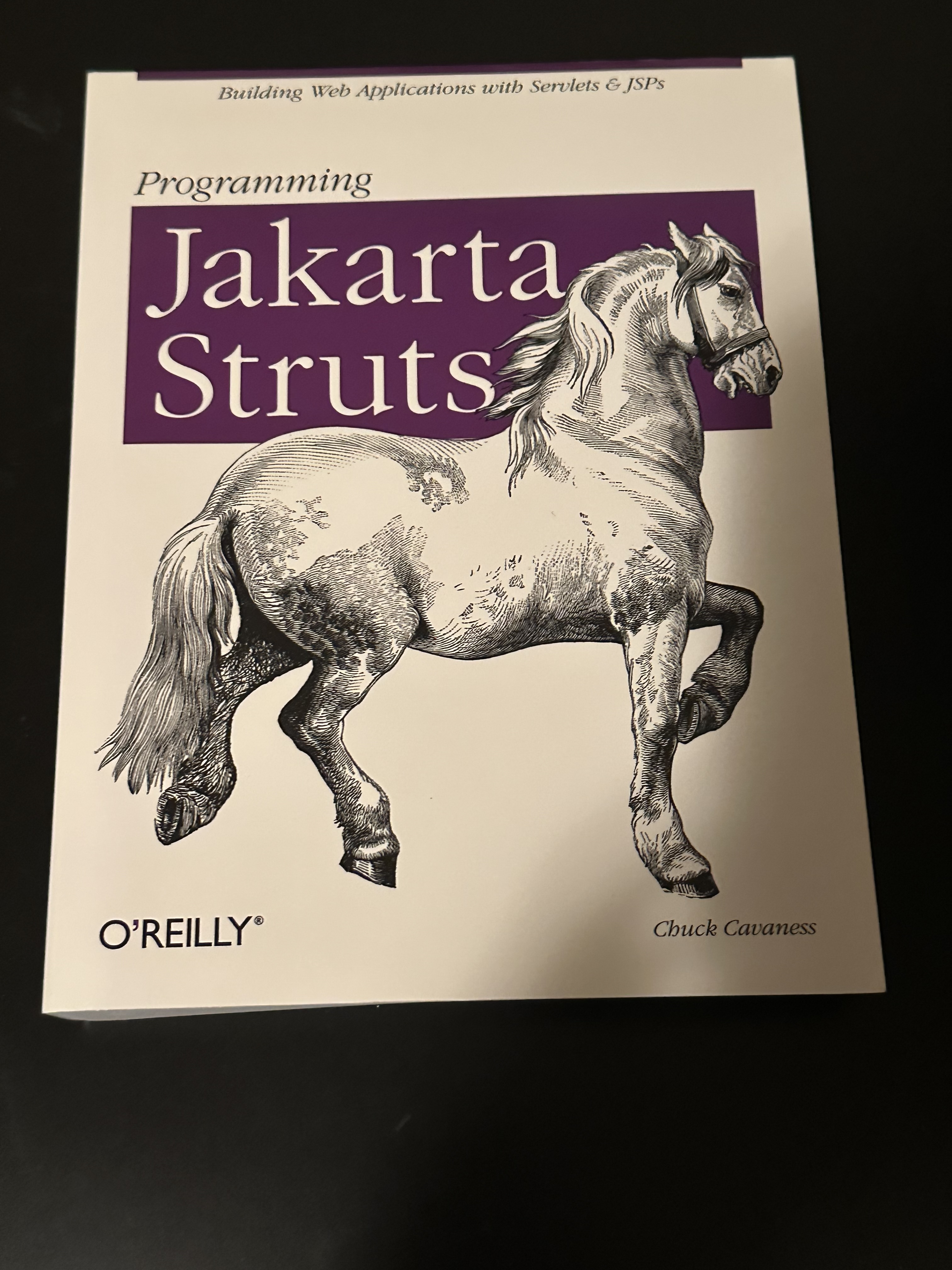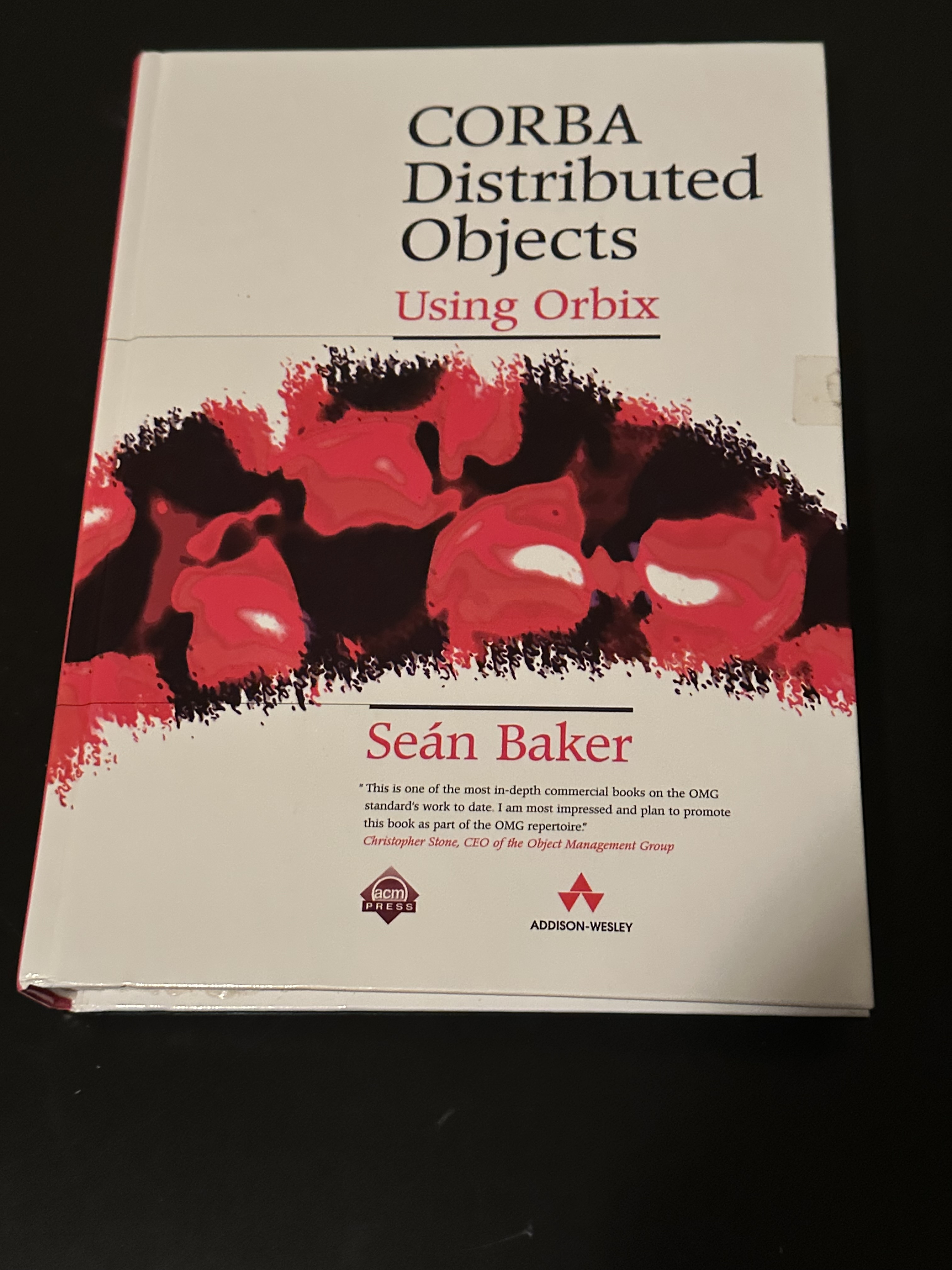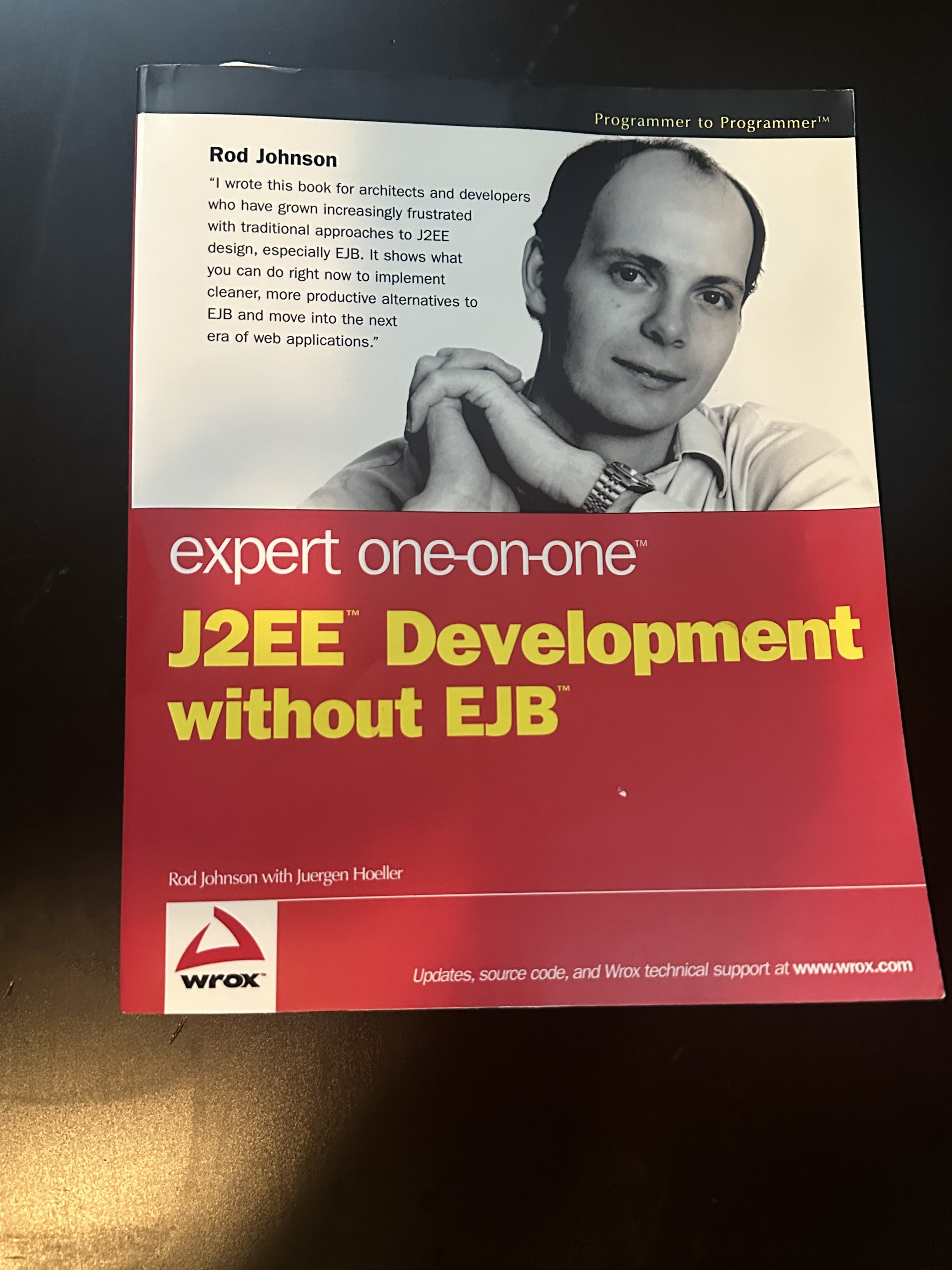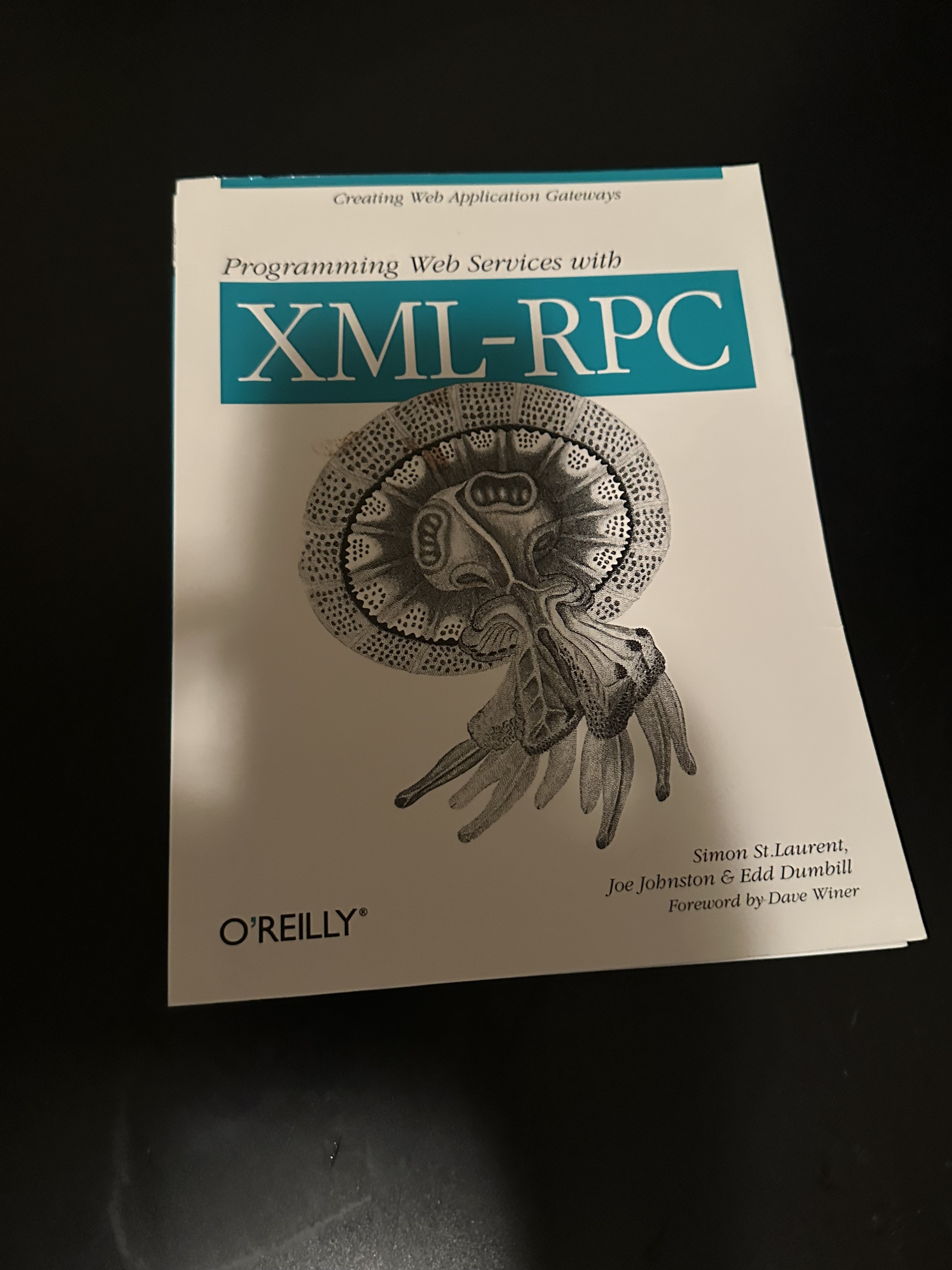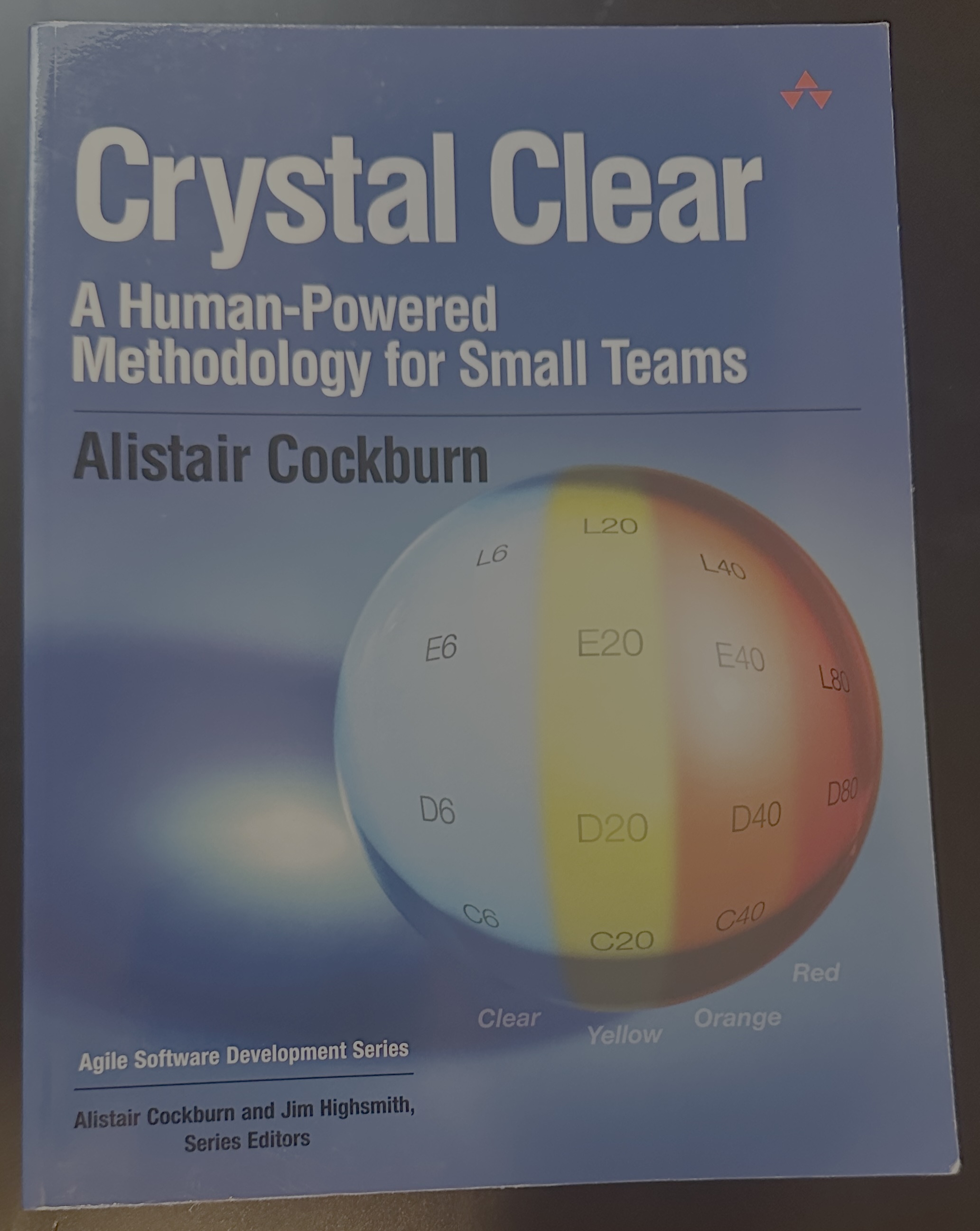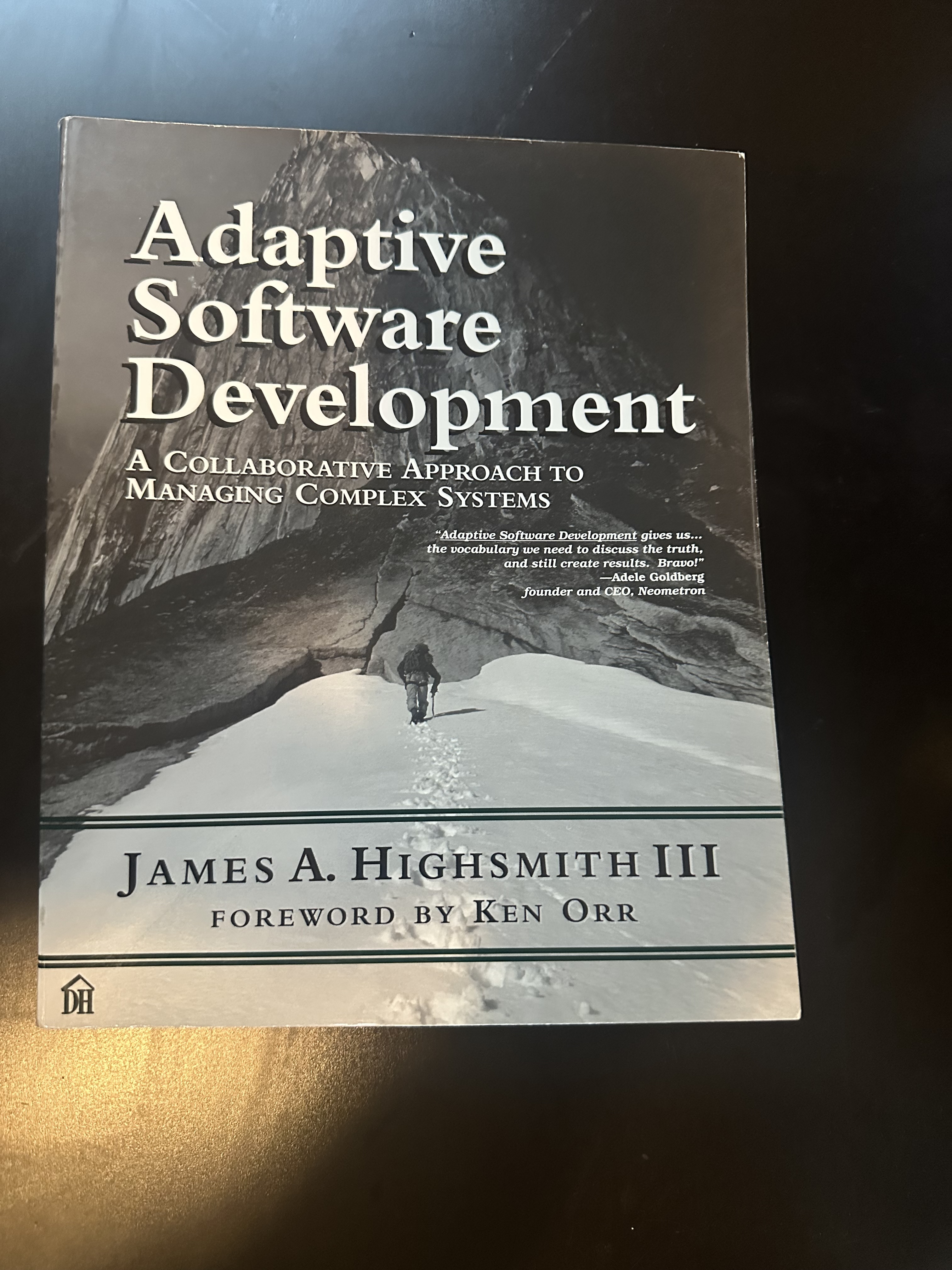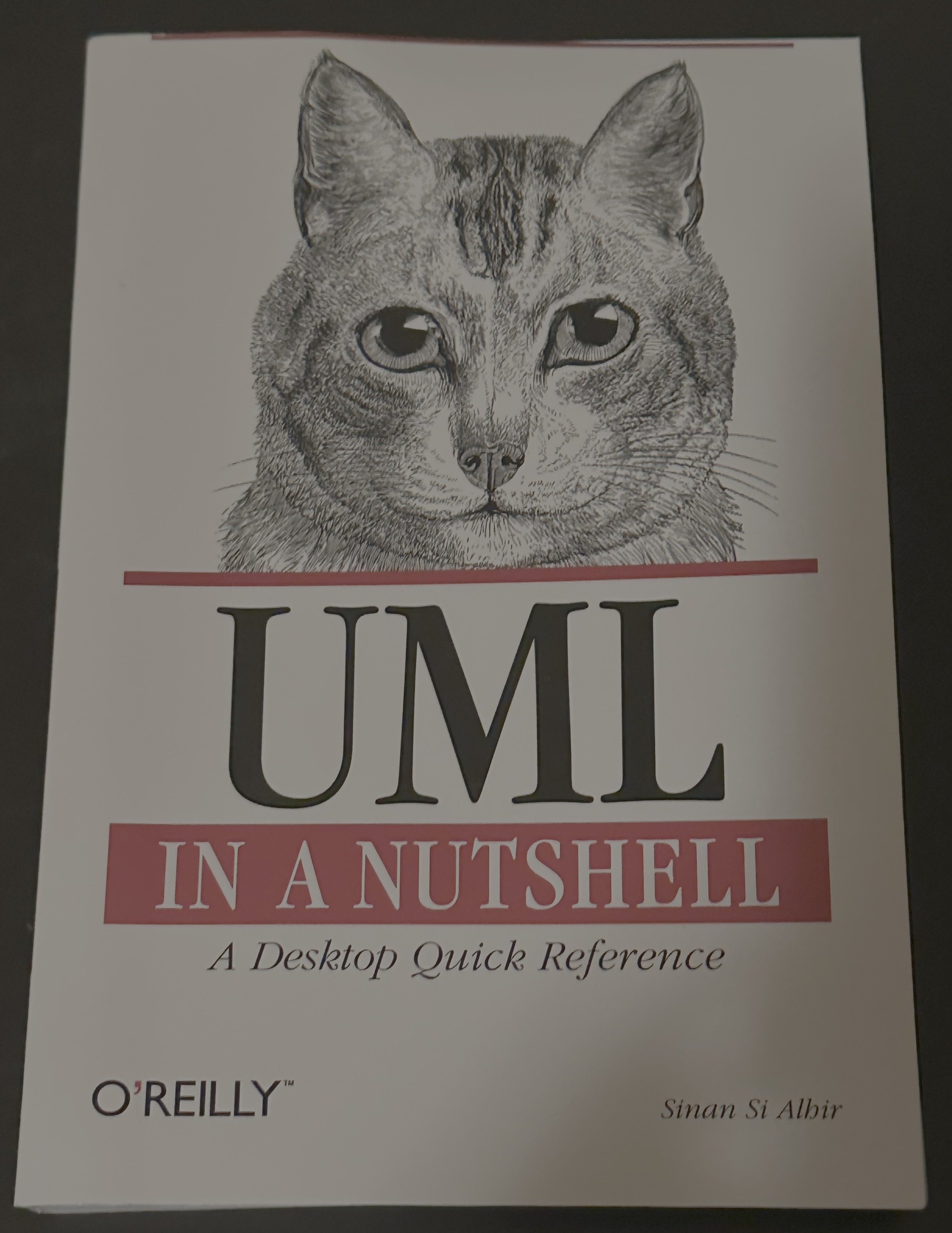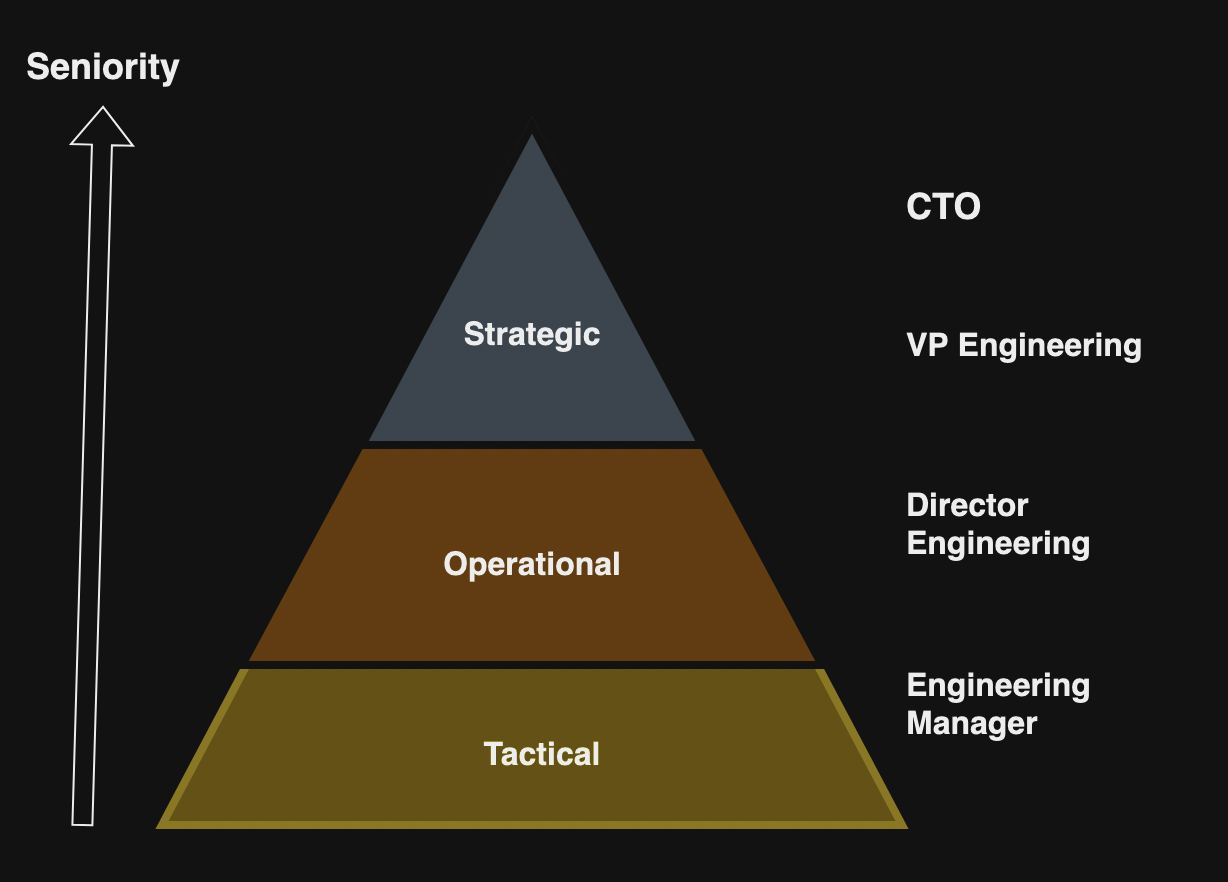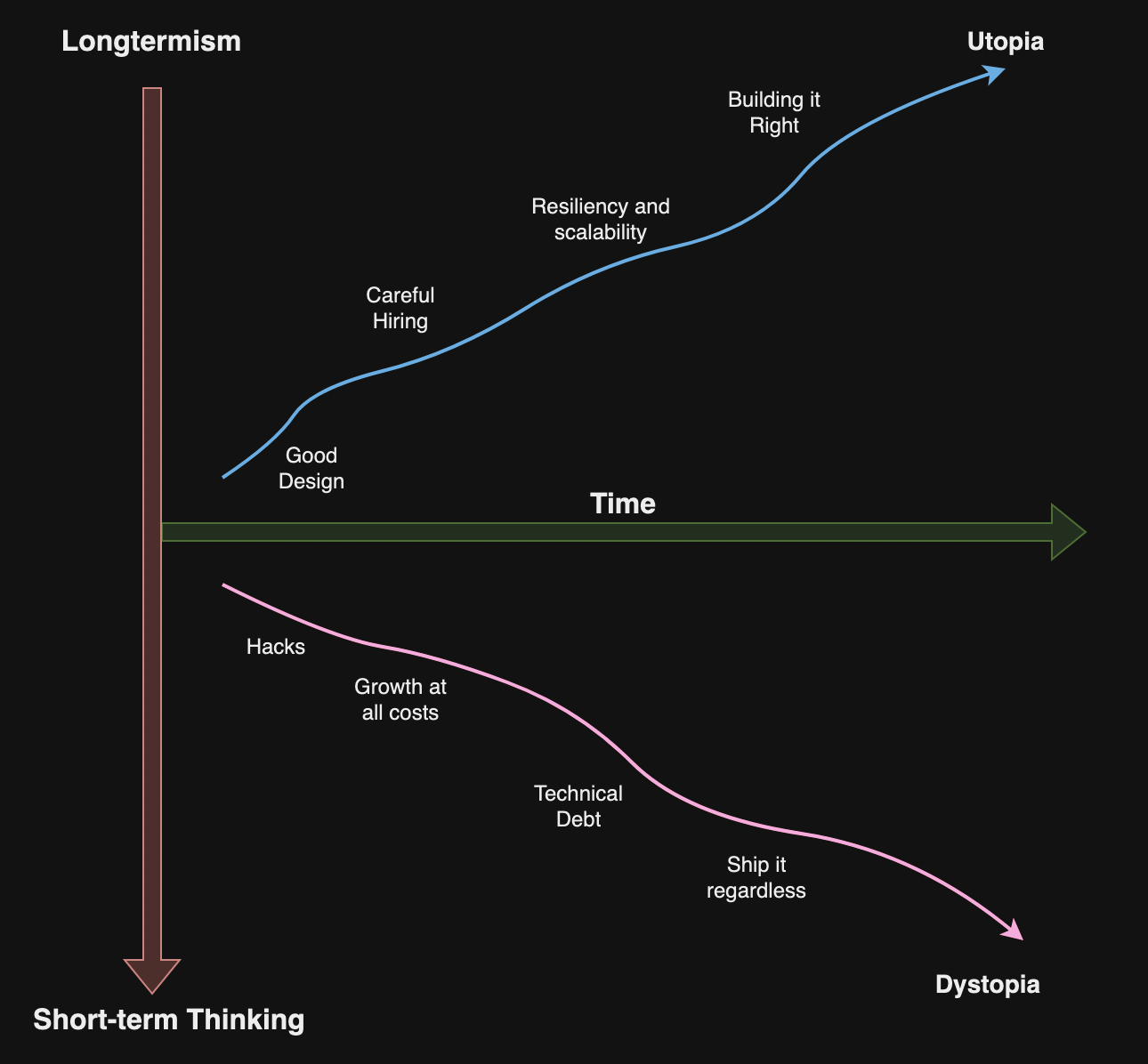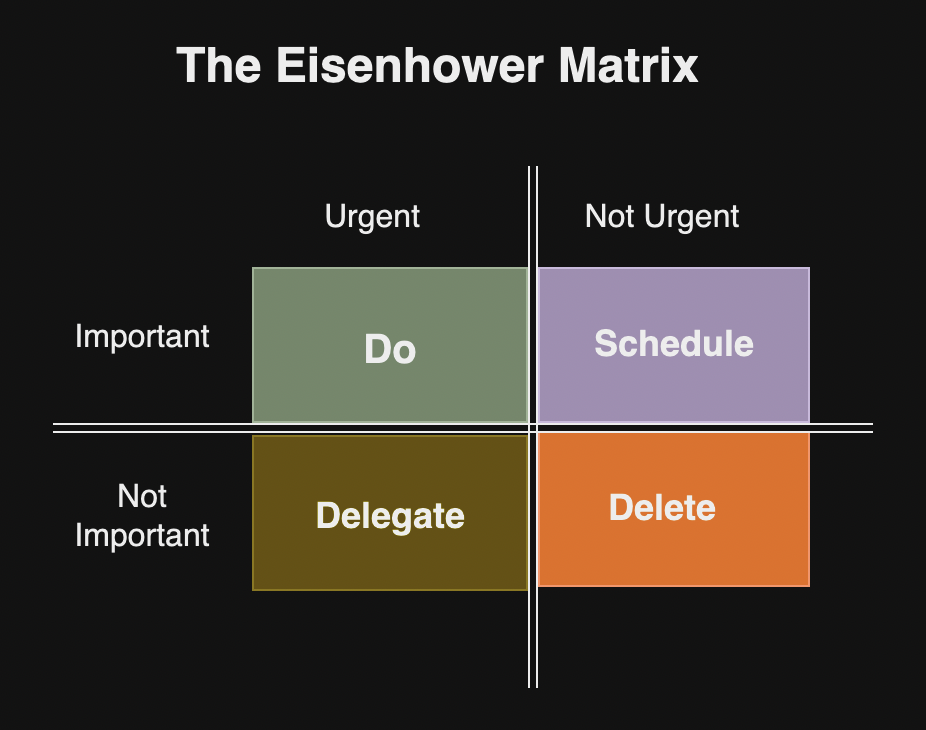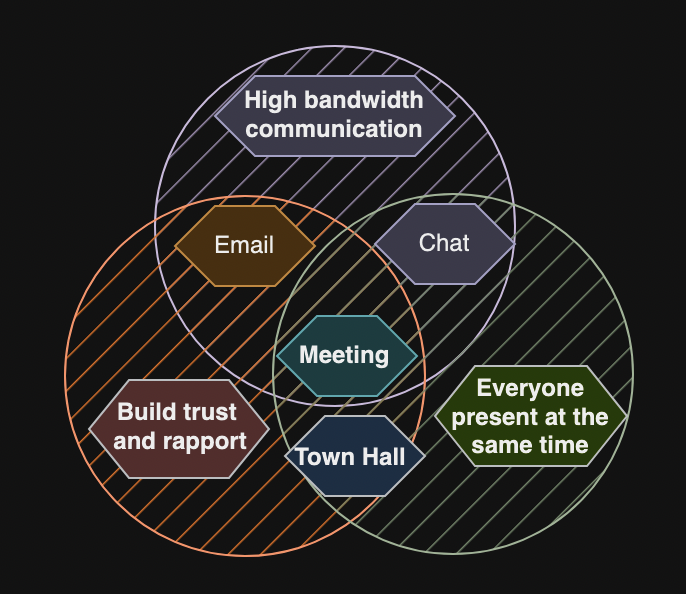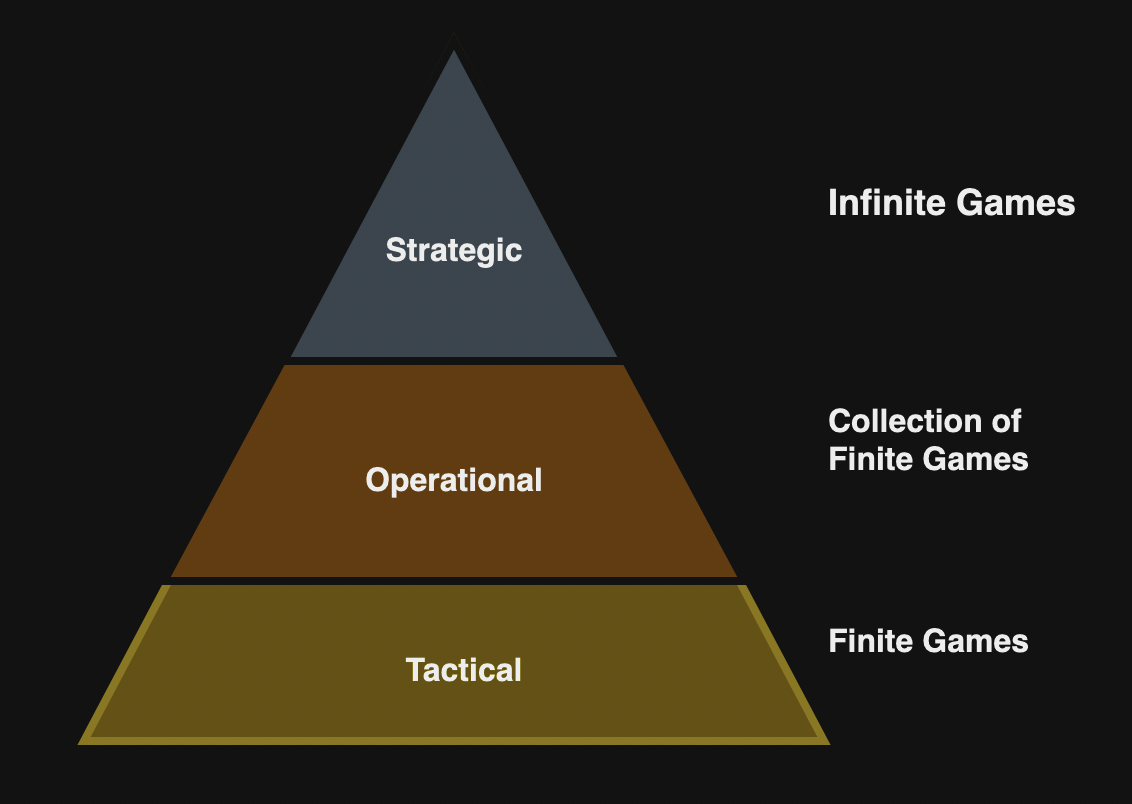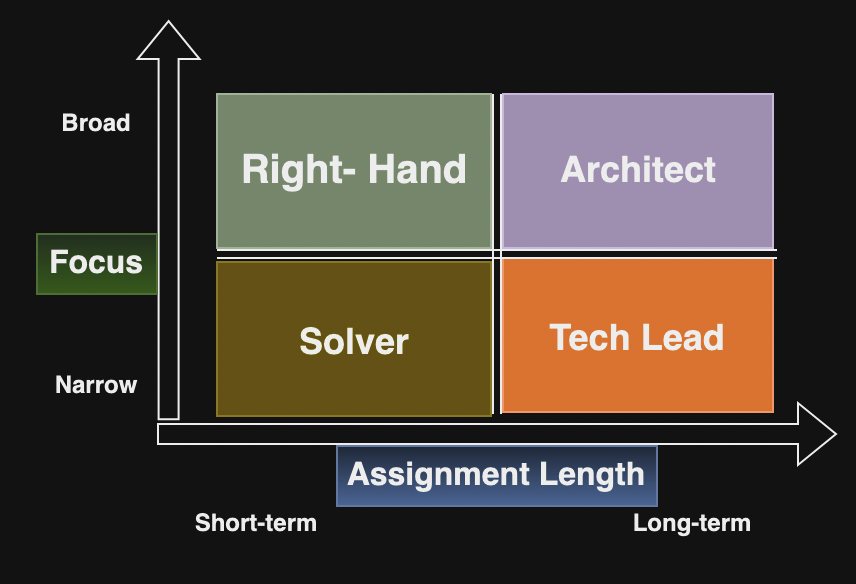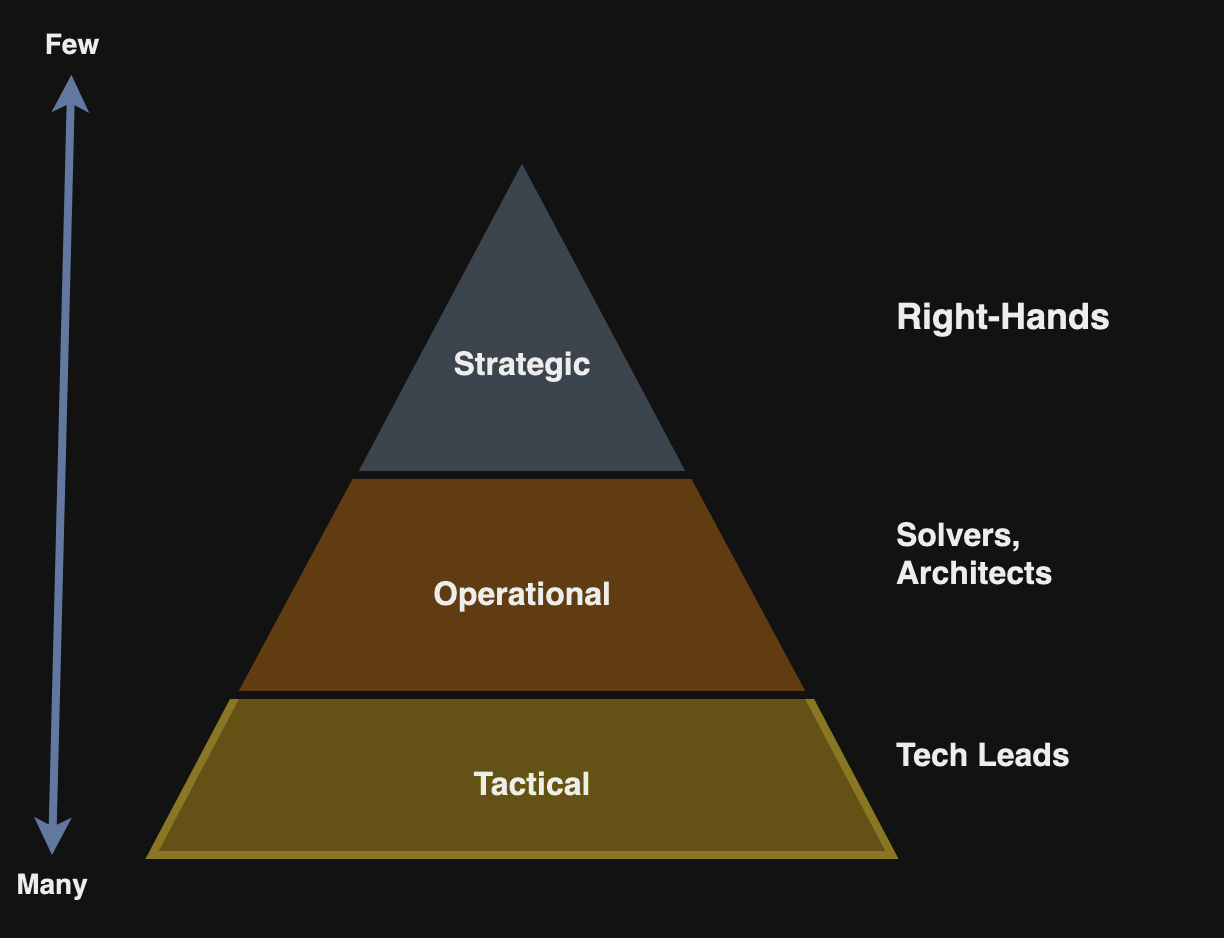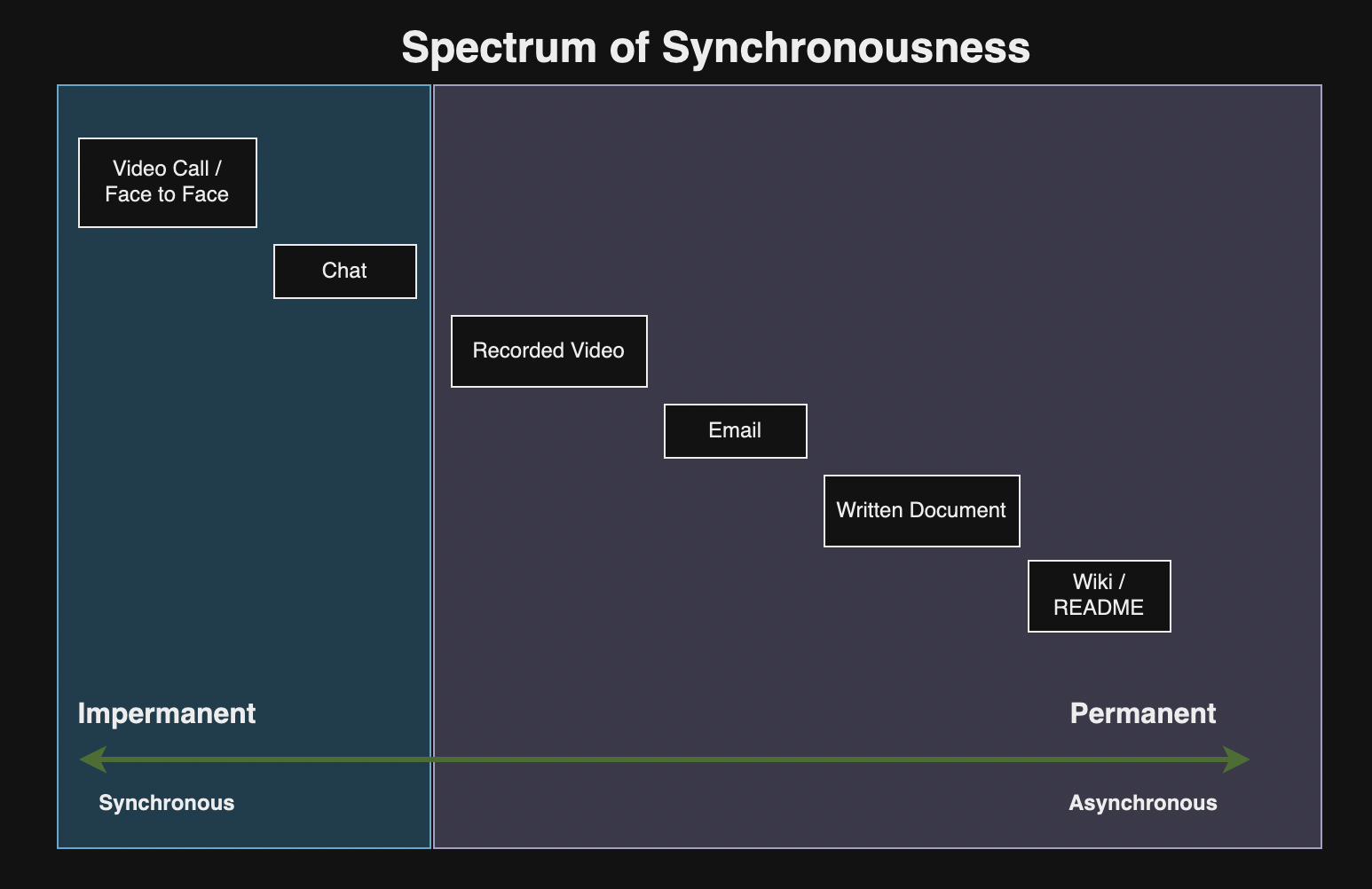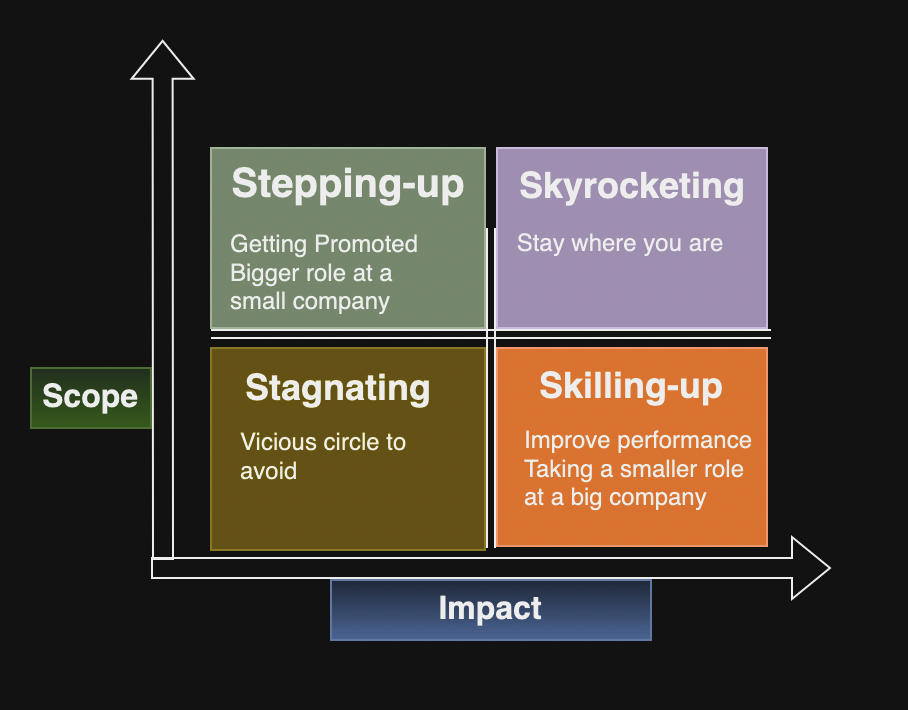Introduction
Error handling is often an afterthought in API development, yet it’s one of the most critical aspects of a good developer experience. For example, a cryptic error message like { "error": "An error occurred" } can lead to hours of frustrating debugging. In this guide, we will build a robust, production-grade error handling framework for a Go application that serves both gRPC and a REST/HTTP proxy based on industry standards like RFC9457 (Problem Details for HTTP APIs) and RFC7807 (obsoleted).
Tenets
Following are tenets of a great API error:
- Structured: machine-readable, not just a string.
- Actionable: explains the developer why the error occurred and, if possible, how to fix it.
- Consistent: all errors, from validation to authentication to server faults, follow the same format.
- Secure: never leaks sensitive internal information like stack traces or database schemas.
Our North Star for HTTP errors will be the Problem Details for HTTP APIs (RFC 9457/7807):
{
"type": "https://example.com/docs/errors/validation-failed",
"title": "Validation Failed",
"status": 400,
"detail": "The request body failed validation.",
"instance": "/v1/todos",
"invalid_params": [
{
"field": "title",
"reason": "must not be empty"
}
]
}We will adapt this model for gRPC by embedding a similar structure in the gRPC status details, creating a single source of truth for all errors.

API Design
Let’s start by defining our TODO API in Protocol Buffers:
syntax = "proto3";
package todo.v1;
import "google/api/annotations.proto";
import "google/api/field_behavior.proto";
import "google/api/resource.proto";
import "google/protobuf/timestamp.proto";
import "google/protobuf/field_mask.proto";
import "buf/validate/validate.proto";
option go_package = "github.com/bhatti/todo-api-errors/api/proto/todo/v1;todo";
// TodoService provides task management operations
service TodoService {
// CreateTask creates a new task
rpc CreateTask(CreateTaskRequest) returns (Task) {
option (google.api.http) = {
post: "/v1/tasks"
body: "*"
};
}
// GetTask retrieves a specific task
rpc GetTask(GetTaskRequest) returns (Task) {
option (google.api.http) = {
get: "/v1/{name=tasks/*}"
};
}
// ListTasks retrieves all tasks
rpc ListTasks(ListTasksRequest) returns (ListTasksResponse) {
option (google.api.http) = {
get: "/v1/tasks"
};
}
// UpdateTask updates an existing task
rpc UpdateTask(UpdateTaskRequest) returns (Task) {
option (google.api.http) = {
patch: "/v1/{task.name=tasks/*}"
body: "task"
};
}
// DeleteTask removes a task
rpc DeleteTask(DeleteTaskRequest) returns (DeleteTaskResponse) {
option (google.api.http) = {
delete: "/v1/{name=tasks/*}"
};
}
// BatchCreateTasks creates multiple tasks at once
rpc BatchCreateTasks(BatchCreateTasksRequest) returns (BatchCreateTasksResponse) {
option (google.api.http) = {
post: "/v1/tasks:batchCreate"
body: "*"
};
}
}
// Task represents a TODO item
message Task {
option (google.api.resource) = {
type: "todo.example.com/Task"
pattern: "tasks/{task}"
singular: "task"
plural: "tasks"
};
// Resource name of the task
string name = 1 [
(google.api.field_behavior) = IDENTIFIER,
(google.api.field_behavior) = OUTPUT_ONLY
];
// Task title
string title = 2 [
(google.api.field_behavior) = REQUIRED,
(buf.validate.field).string = {
min_len: 1
max_len: 200
}
];
// Task description
string description = 3 [
(google.api.field_behavior) = OPTIONAL,
(buf.validate.field).string = {
max_len: 1000
}
];
// Task status
Status status = 4 [
(google.api.field_behavior) = REQUIRED
];
// Task priority
Priority priority = 5 [
(google.api.field_behavior) = OPTIONAL
];
// Due date for the task
google.protobuf.Timestamp due_date = 6 [
(google.api.field_behavior) = OPTIONAL,
(buf.validate.field).timestamp = {
gt_now: true
}
];
// Task creation time
google.protobuf.Timestamp create_time = 7 [
(google.api.field_behavior) = OUTPUT_ONLY
];
// Task last update time
google.protobuf.Timestamp update_time = 8 [
(google.api.field_behavior) = OUTPUT_ONLY
];
// User who created the task
string created_by = 9 [
(google.api.field_behavior) = OUTPUT_ONLY
];
// Tags associated with the task
repeated string tags = 10 [
(buf.validate.field).repeated = {
max_items: 10
items: {
string: {
pattern: "^[a-z0-9-]+$"
max_len: 50
}
}
}
];
}
// Task status enumeration
enum Status {
STATUS_UNSPECIFIED = 0;
STATUS_PENDING = 1;
STATUS_IN_PROGRESS = 2;
STATUS_COMPLETED = 3;
STATUS_CANCELLED = 4;
}
// Task priority enumeration
enum Priority {
PRIORITY_UNSPECIFIED = 0;
PRIORITY_LOW = 1;
PRIORITY_MEDIUM = 2;
PRIORITY_HIGH = 3;
PRIORITY_CRITICAL = 4;
}
// CreateTaskRequest message
message CreateTaskRequest {
// Task to create
Task task = 1 [
(google.api.field_behavior) = REQUIRED,
(buf.validate.field).required = true
];
}
// GetTaskRequest message
message GetTaskRequest {
// Resource name of the task
string name = 1 [
(google.api.field_behavior) = REQUIRED,
(google.api.resource_reference) = {
type: "todo.example.com/Task"
},
(buf.validate.field).string = {
pattern: "^tasks/[a-zA-Z0-9-]+$"
}
];
}
// ListTasksRequest message
message ListTasksRequest {
// Maximum number of tasks to return
int32 page_size = 1 [
(buf.validate.field).int32 = {
gte: 0
lte: 1000
}
];
// Page token for pagination
string page_token = 2;
// Filter expression
string filter = 3;
// Order by expression
string order_by = 4;
}
// ListTasksResponse message
message ListTasksResponse {
// List of tasks
repeated Task tasks = 1;
// Token for next page
string next_page_token = 2;
// Total number of tasks
int32 total_size = 3;
}
// UpdateTaskRequest message
message UpdateTaskRequest {
// Task to update
Task task = 1 [
(google.api.field_behavior) = REQUIRED,
(buf.validate.field).required = true
];
// Fields to update
google.protobuf.FieldMask update_mask = 2 [
(google.api.field_behavior) = REQUIRED,
(buf.validate.field).required = true
];
}
// DeleteTaskRequest message
message DeleteTaskRequest {
// Resource name of the task
string name = 1 [
(google.api.field_behavior) = REQUIRED,
(google.api.resource_reference) = {
type: "todo.example.com/Task"
}
];
}
// DeleteTaskResponse message
message DeleteTaskResponse {
// Confirmation message
string message = 1;
}
// BatchCreateTasksRequest message
message BatchCreateTasksRequest {
// Tasks to create
repeated CreateTaskRequest requests = 1 [
(google.api.field_behavior) = REQUIRED,
(buf.validate.field).repeated = {
min_items: 1
max_items: 100
}
];
}
// BatchCreateTasksResponse message
message BatchCreateTasksResponse {
// Created tasks
repeated Task tasks = 1;
}syntax = "proto3";
package errors.v1;
import "google/protobuf/timestamp.proto";
import "google/protobuf/any.proto";
option go_package = "github.com/bhatti/todo-api-errors/api/proto/errors/v1;errors";
// ErrorDetail provides a structured, machine-readable error payload.
// It is designed to be embedded in the `details` field of a `google.rpc.Status` message.
message ErrorDetail {
// A unique, application-specific error code.
string code = 1;
// A short, human-readable summary of the problem type.
string title = 2;
// A human-readable explanation specific to this occurrence of the problem.
string detail = 3;
// A list of validation errors, useful for INVALID_ARGUMENT responses.
repeated FieldViolation field_violations = 4;
// Optional trace ID for request correlation
string trace_id = 5;
// Optional timestamp when the error occurred
google.protobuf.Timestamp timestamp = 6;
// Optional instance path where the error occurred
string instance = 7;
// Optional extensions for additional error context
map<string, google.protobuf.Any> extensions = 8;
}
// Describes a single validation failure.
message FieldViolation {
// The path to the field that failed validation, e.g., "title".
string field = 1;
// A developer-facing description of the validation rule that failed.
string description = 2;
// Application-specific error code for this validation failure
string code = 3;
}
// AppErrorCode defines a list of standardized, application-specific error codes.
enum AppErrorCode {
APP_ERROR_CODE_UNSPECIFIED = 0;
// Validation failures
VALIDATION_FAILED = 1;
REQUIRED_FIELD = 2;
TOO_SHORT = 3;
TOO_LONG = 4;
INVALID_FORMAT = 5;
MUST_BE_FUTURE = 6;
INVALID_VALUE = 7;
DUPLICATE_TAG = 8;
INVALID_TAG_FORMAT = 9;
OVERDUE_COMPLETION = 10;
EMPTY_BATCH = 11;
BATCH_TOO_LARGE = 12;
DUPLICATE_TITLE = 13;
// Resource errors
RESOURCE_NOT_FOUND = 1001;
RESOURCE_CONFLICT = 1002;
// Authentication and authorization
AUTHENTICATION_FAILED = 2001;
PERMISSION_DENIED = 2002;
// Rate limiting and service availability
RATE_LIMIT_EXCEEDED = 3001;
SERVICE_UNAVAILABLE = 3002;
// Internal errors
INTERNAL_ERROR = 9001;
}Error Handling Implementation
Now let’s implement our error handling framework:
package errors
import (
"fmt"
errorspb "github.com/bhatti/todo-api-errors/api/proto/errors/v1"
"google.golang.org/genproto/googleapis/rpc/errdetails"
"google.golang.org/grpc/codes"
"google.golang.org/grpc/status"
"google.golang.org/protobuf/types/known/anypb"
"google.golang.org/protobuf/types/known/timestamppb"
)
// AppError is our custom error type using protobuf definitions.
type AppError struct {
GRPCCode codes.Code
AppCode errorspb.AppErrorCode
Title string
Detail string
FieldViolations []*errorspb.FieldViolation
TraceID string
Instance string
Extensions map[string]*anypb.Any
CausedBy error // For internal logging
}
func (e *AppError) Error() string {
return fmt.Sprintf("gRPC Code: %s, App Code: %s, Title: %s, Detail: %s", e.GRPCCode, e.AppCode, e.Title, e.Detail)
}
// ToGRPCStatus converts our AppError into a gRPC status.Status.
func (e *AppError) ToGRPCStatus() *status.Status {
st := status.New(e.GRPCCode, e.Title)
errorDetail := &errorspb.ErrorDetail{
Code: e.AppCode.String(),
Title: e.Title,
Detail: e.Detail,
FieldViolations: e.FieldViolations,
TraceId: e.TraceID,
Timestamp: timestamppb.Now(),
Instance: e.Instance,
Extensions: e.Extensions,
}
// For validation errors, we also attach the standard BadRequest detail
// so that gRPC-Gateway and other standard tools can understand it.
if e.GRPCCode == codes.InvalidArgument && len(e.FieldViolations) > 0 {
br := &errdetails.BadRequest{}
for _, fv := range e.FieldViolations {
br.FieldViolations = append(br.FieldViolations, &errdetails.BadRequest_FieldViolation{
Field: fv.Field,
Description: fv.Description,
})
}
st, _ = st.WithDetails(br, errorDetail)
return st
}
st, _ = st.WithDetails(errorDetail)
return st
}
// Helper functions for creating common errors
func NewValidationFailed(violations []*errorspb.FieldViolation, traceID string) *AppError {
return &AppError{
GRPCCode: codes.InvalidArgument,
AppCode: errorspb.AppErrorCode_VALIDATION_FAILED,
Title: "Validation Failed",
Detail: fmt.Sprintf("The request contains %d validation errors", len(violations)),
FieldViolations: violations,
TraceID: traceID,
}
}
func NewNotFound(resource string, id string, traceID string) *AppError {
return &AppError{
GRPCCode: codes.NotFound,
AppCode: errorspb.AppErrorCode_RESOURCE_NOT_FOUND,
Title: "Resource Not Found",
Detail: fmt.Sprintf("%s with ID '%s' was not found.", resource, id),
TraceID: traceID,
}
}
func NewConflict(resource, reason string, traceID string) *AppError {
return &AppError{
GRPCCode: codes.AlreadyExists,
AppCode: errorspb.AppErrorCode_RESOURCE_CONFLICT,
Title: "Resource Conflict",
Detail: fmt.Sprintf("Conflict creating %s: %s", resource, reason),
TraceID: traceID,
}
}
func NewInternal(message string, traceID string, causedBy error) *AppError {
return &AppError{
GRPCCode: codes.Internal,
AppCode: errorspb.AppErrorCode_INTERNAL_ERROR,
Title: "Internal Server Error",
Detail: message,
TraceID: traceID,
CausedBy: causedBy,
}
}
func NewPermissionDenied(resource, action string, traceID string) *AppError {
return &AppError{
GRPCCode: codes.PermissionDenied,
AppCode: errorspb.AppErrorCode_PERMISSION_DENIED,
Title: "Permission Denied",
Detail: fmt.Sprintf("You don't have permission to %s %s", action, resource),
TraceID: traceID,
}
}
func NewServiceUnavailable(message string, traceID string) *AppError {
return &AppError{
GRPCCode: codes.Unavailable,
AppCode: errorspb.AppErrorCode_SERVICE_UNAVAILABLE,
Title: "Service Unavailable",
Detail: message,
TraceID: traceID,
}
}
func NewRequiredField(field, message string, traceID string) *AppError {
return &AppError{
GRPCCode: codes.InvalidArgument,
AppCode: errorspb.AppErrorCode_VALIDATION_FAILED,
Title: "Validation Failed",
Detail: "The request contains validation errors",
FieldViolations: []*errorspb.FieldViolation{
{
Field: field,
Code: errorspb.AppErrorCode_REQUIRED_FIELD.String(),
Description: message,
},
},
TraceID: traceID,
}
}Validation Framework
Let’s implement validation that returns all errors at once:
package validation
import (
"errors"
"fmt"
"regexp"
"strings"
"buf.build/gen/go/bufbuild/protovalidate/protocolbuffers/go/buf/validate"
"buf.build/go/protovalidate"
errorspb "github.com/bhatti/todo-api-errors/api/proto/errors/v1"
todopb "github.com/bhatti/todo-api-errors/api/proto/todo/v1"
apperrors "github.com/bhatti/todo-api-errors/internal/errors"
"google.golang.org/protobuf/proto"
)
var pv protovalidate.Validator
func init() {
var err error
pv, err = protovalidate.New()
if err != nil {
panic(fmt.Sprintf("failed to initialize protovalidator: %v", err))
}
}
// ValidateRequest checks a proto message and returns an AppError with all violations.
func ValidateRequest(req proto.Message, traceID string) error {
if err := pv.Validate(req); err != nil {
var validationErrs *protovalidate.ValidationError
if errors.As(err, &validationErrs) {
var violations []*errorspb.FieldViolation
for _, violation := range validationErrs.Violations {
fieldPath := ""
if violation.Proto.GetField() != nil {
fieldPath = formatFieldPath(violation.Proto.GetField())
}
ruleId := violation.Proto.GetRuleId()
message := violation.Proto.GetMessage()
violations = append(violations, &errorspb.FieldViolation{
Field: fieldPath,
Description: message,
Code: mapConstraintToCode(ruleId),
})
}
return apperrors.NewValidationFailed(violations, traceID)
}
return apperrors.NewInternal("Validation failed", traceID, err)
}
return nil
}
// ValidateTask performs additional business logic validation
func ValidateTask(task *todopb.Task, traceID string) error {
var violations []*errorspb.FieldViolation
// Proto validation first
if err := ValidateRequest(task, traceID); err != nil {
if appErr, ok := err.(*apperrors.AppError); ok {
violations = append(violations, appErr.FieldViolations...)
}
}
// Additional business rules
if task.Status == todopb.Status_STATUS_COMPLETED && task.DueDate != nil {
if task.UpdateTime != nil && task.UpdateTime.AsTime().After(task.DueDate.AsTime()) {
violations = append(violations, &errorspb.FieldViolation{
Field: "due_date",
Code: errorspb.AppErrorCode_OVERDUE_COMPLETION.String(),
Description: "Task was completed after the due date",
})
}
}
// Validate tags format
for i, tag := range task.Tags {
if !isValidTag(tag) {
violations = append(violations, &errorspb.FieldViolation{
Field: fmt.Sprintf("tags[%d]", i),
Code: errorspb.AppErrorCode_INVALID_TAG_FORMAT.String(),
Description: fmt.Sprintf("Tag '%s' must be lowercase letters, numbers, and hyphens only", tag),
})
}
}
// Check for duplicate tags
tagMap := make(map[string]bool)
for i, tag := range task.Tags {
if tagMap[tag] {
violations = append(violations, &errorspb.FieldViolation{
Field: fmt.Sprintf("tags[%d]", i),
Code: errorspb.AppErrorCode_DUPLICATE_TAG.String(),
Description: fmt.Sprintf("Tag '%s' appears multiple times", tag),
})
}
tagMap[tag] = true
}
if len(violations) > 0 {
return apperrors.NewValidationFailed(violations, traceID)
}
return nil
}
// ValidateBatchCreateTasks validates batch operations
func ValidateBatchCreateTasks(req *todopb.BatchCreateTasksRequest, traceID string) error {
var violations []*errorspb.FieldViolation
// Check batch size
if len(req.Requests) == 0 {
violations = append(violations, &errorspb.FieldViolation{
Field: "requests",
Code: errorspb.AppErrorCode_EMPTY_BATCH.String(),
Description: "Batch must contain at least one task",
})
}
if len(req.Requests) > 100 {
violations = append(violations, &errorspb.FieldViolation{
Field: "requests",
Code: errorspb.AppErrorCode_BATCH_TOO_LARGE.String(),
Description: fmt.Sprintf("Batch size %d exceeds maximum of 100", len(req.Requests)),
})
}
// Validate each task
for i, createReq := range req.Requests {
if createReq.Task == nil {
violations = append(violations, &errorspb.FieldViolation{
Field: fmt.Sprintf("requests[%d].task", i),
Code: errorspb.AppErrorCode_REQUIRED_FIELD.String(),
Description: "Task is required",
})
continue
}
// Validate task
if err := ValidateTask(createReq.Task, traceID); err != nil {
if appErr, ok := err.(*apperrors.AppError); ok {
for _, violation := range appErr.FieldViolations {
violation.Field = fmt.Sprintf("requests[%d].task.%s", i, violation.Field)
violations = append(violations, violation)
}
}
}
}
// Check for duplicate titles
titleMap := make(map[string][]int)
for i, createReq := range req.Requests {
if createReq.Task != nil && createReq.Task.Title != "" {
titleMap[createReq.Task.Title] = append(titleMap[createReq.Task.Title], i)
}
}
for title, indices := range titleMap {
if len(indices) > 1 {
for _, idx := range indices {
violations = append(violations, &errorspb.FieldViolation{
Field: fmt.Sprintf("requests[%d].task.title", idx),
Code: errorspb.AppErrorCode_DUPLICATE_TITLE.String(),
Description: fmt.Sprintf("Title '%s' is used by multiple tasks in the batch", title),
})
}
}
}
if len(violations) > 0 {
return apperrors.NewValidationFailed(violations, traceID)
}
return nil
}
// Helper functions
func formatFieldPath(fieldPath *validate.FieldPath) string {
if fieldPath == nil {
return ""
}
// Build field path from elements
var parts []string
for _, element := range fieldPath.GetElements() {
if element.GetFieldName() != "" {
parts = append(parts, element.GetFieldName())
} else if element.GetFieldNumber() != 0 {
parts = append(parts, fmt.Sprintf("field_%d", element.GetFieldNumber()))
}
}
return strings.Join(parts, ".")
}
func mapConstraintToCode(ruleId string) string {
switch {
case strings.Contains(ruleId, "required"):
return errorspb.AppErrorCode_REQUIRED_FIELD.String()
case strings.Contains(ruleId, "min_len"):
return errorspb.AppErrorCode_TOO_SHORT.String()
case strings.Contains(ruleId, "max_len"):
return errorspb.AppErrorCode_TOO_LONG.String()
case strings.Contains(ruleId, "pattern"):
return errorspb.AppErrorCode_INVALID_FORMAT.String()
case strings.Contains(ruleId, "gt_now"):
return errorspb.AppErrorCode_MUST_BE_FUTURE.String()
case ruleId == "":
return errorspb.AppErrorCode_VALIDATION_FAILED.String()
default:
return errorspb.AppErrorCode_INVALID_VALUE.String()
}
}
var validTagPattern = regexp.MustCompile(`^[a-z0-9-]+$`)
func isValidTag(tag string) bool {
return len(tag) <= 50 && validTagPattern.MatchString(tag)
}
Error Handler Middleware
Now let’s create middleware to handle errors consistently:
package middleware
import (
"context"
"errors"
"log"
apperrors "github.com/bhatti/todo-api-errors/internal/errors"
"google.golang.org/grpc"
"google.golang.org/grpc/status"
)
// UnaryErrorInterceptor translates application errors into gRPC statuses.
func UnaryErrorInterceptor(ctx context.Context, req interface{}, info *grpc.UnaryServerInfo, handler grpc.UnaryHandler) (interface{}, error) {
resp, err := handler(ctx, req)
if err == nil {
return resp, nil
}
var appErr *apperrors.AppError
if errors.As(err, &appErr) {
if appErr.CausedBy != nil {
log.Printf("ERROR: %s, Original cause: %v", appErr.Title, appErr.CausedBy)
}
return nil, appErr.ToGRPCStatus().Err()
}
if _, ok := status.FromError(err); ok {
return nil, err // Already a gRPC status
}
log.Printf("UNEXPECTED ERROR: %v", err)
return nil, apperrors.NewInternal("An unexpected error occurred", "", err).ToGRPCStatus().Err()
}package middleware
import (
"context"
"encoding/json"
"net/http"
"runtime/debug"
"time"
errorspb "github.com/bhatti/todo-api-errors/api/proto/errors/v1"
apperrors "github.com/bhatti/todo-api-errors/internal/errors"
"github.com/google/uuid"
"github.com/grpc-ecosystem/grpc-gateway/v2/runtime"
"go.opentelemetry.io/otel/trace"
"google.golang.org/grpc/status"
"google.golang.org/protobuf/encoding/protojson"
)
// HTTPErrorHandler handles errors for HTTP endpoints
func HTTPErrorHandler(next http.Handler) http.Handler {
return http.HandlerFunc(func(w http.ResponseWriter, r *http.Request) {
// Add trace ID to context
traceID := r.Header.Get("X-Trace-ID")
if traceID == "" {
traceID = uuid.New().String()
}
ctx := context.WithValue(r.Context(), "traceID", traceID)
r = r.WithContext(ctx)
// Create response wrapper to intercept errors
wrapped := &responseWriter{
ResponseWriter: w,
request: r,
traceID: traceID,
}
// Handle panics
defer func() {
if err := recover(); err != nil {
handlePanic(wrapped, err)
}
}()
// Process request
next.ServeHTTP(wrapped, r)
})
}
// responseWriter wraps http.ResponseWriter to intercept errors
type responseWriter struct {
http.ResponseWriter
request *http.Request
traceID string
statusCode int
written bool
}
func (w *responseWriter) WriteHeader(code int) {
if !w.written {
w.statusCode = code
w.ResponseWriter.WriteHeader(code)
w.written = true
}
}
func (w *responseWriter) Write(b []byte) (int, error) {
if !w.written {
w.WriteHeader(http.StatusOK)
}
return w.ResponseWriter.Write(b)
}
// handlePanic converts panics to proper error responses
func handlePanic(w *responseWriter, recovered interface{}) {
// Log stack trace
debug.PrintStack()
appErr := apperrors.NewInternal("An unexpected error occurred. Please try again later.", w.traceID, nil)
writeErrorResponse(w, appErr)
}
// CustomHTTPError handles gRPC gateway error responses
func CustomHTTPError(ctx context.Context, mux *runtime.ServeMux,
marshaler runtime.Marshaler, w http.ResponseWriter, r *http.Request, err error) {
// Extract trace ID
traceID := r.Header.Get("X-Trace-ID")
if traceID == "" {
if span := trace.SpanFromContext(ctx); span.SpanContext().IsValid() {
traceID = span.SpanContext().TraceID().String()
} else {
traceID = uuid.New().String()
}
}
// Convert gRPC error to HTTP response
st, _ := status.FromError(err)
// Check if we have our custom error detail in status details
for _, detail := range st.Details() {
if errorDetail, ok := detail.(*errorspb.ErrorDetail); ok {
// Update the error detail with current request context
errorDetail.TraceId = traceID
errorDetail.Instance = r.URL.Path
// Convert to JSON and write response
w.Header().Set("Content-Type", "application/problem+json")
w.WriteHeader(runtime.HTTPStatusFromCode(st.Code()))
// Create a simplified JSON response that matches RFC 7807
response := map[string]interface{}{
"type": getTypeForCode(errorDetail.Code),
"title": errorDetail.Title,
"status": runtime.HTTPStatusFromCode(st.Code()),
"detail": errorDetail.Detail,
"instance": errorDetail.Instance,
"traceId": errorDetail.TraceId,
"timestamp": errorDetail.Timestamp,
}
// Add field violations if present
if len(errorDetail.FieldViolations) > 0 {
violations := make([]map[string]interface{}, len(errorDetail.FieldViolations))
for i, fv := range errorDetail.FieldViolations {
violations[i] = map[string]interface{}{
"field": fv.Field,
"code": fv.Code,
"message": fv.Description,
}
}
response["errors"] = violations
}
// Add extensions if present
if len(errorDetail.Extensions) > 0 {
extensions := make(map[string]interface{})
for k, v := range errorDetail.Extensions {
// Convert Any to JSON
if jsonBytes, err := protojson.Marshal(v); err == nil {
var jsonData interface{}
if err := json.Unmarshal(jsonBytes, &jsonData); err == nil {
extensions[k] = jsonData
}
}
}
if len(extensions) > 0 {
response["extensions"] = extensions
}
}
if err := json.NewEncoder(w).Encode(response); err != nil {
http.Error(w, `{"error": "Failed to encode error response"}`, 500)
}
return
}
}
// Fallback: create new error response
fallbackErr := apperrors.NewInternal(st.Message(), traceID, nil)
fallbackErr.GRPCCode = st.Code()
writeAppErrorResponse(w, fallbackErr, r.URL.Path)
}
// Helper functions
func getTypeForCode(code string) string {
switch code {
case errorspb.AppErrorCode_VALIDATION_FAILED.String():
return "https://api.example.com/errors/validation-failed"
case errorspb.AppErrorCode_RESOURCE_NOT_FOUND.String():
return "https://api.example.com/errors/resource-not-found"
case errorspb.AppErrorCode_RESOURCE_CONFLICT.String():
return "https://api.example.com/errors/resource-conflict"
case errorspb.AppErrorCode_PERMISSION_DENIED.String():
return "https://api.example.com/errors/permission-denied"
case errorspb.AppErrorCode_INTERNAL_ERROR.String():
return "https://api.example.com/errors/internal-error"
case errorspb.AppErrorCode_SERVICE_UNAVAILABLE.String():
return "https://api.example.com/errors/service-unavailable"
default:
return "https://api.example.com/errors/unknown"
}
}
func writeErrorResponse(w http.ResponseWriter, err error) {
if appErr, ok := err.(*apperrors.AppError); ok {
writeAppErrorResponse(w, appErr, "")
} else {
http.Error(w, err.Error(), http.StatusInternalServerError)
}
}
func writeAppErrorResponse(w http.ResponseWriter, appErr *apperrors.AppError, instance string) {
statusCode := runtime.HTTPStatusFromCode(appErr.GRPCCode)
response := map[string]interface{}{
"type": getTypeForCode(appErr.AppCode.String()),
"title": appErr.Title,
"status": statusCode,
"detail": appErr.Detail,
"traceId": appErr.TraceID,
"timestamp": time.Now(),
}
if instance != "" {
response["instance"] = instance
}
if len(appErr.FieldViolations) > 0 {
violations := make([]map[string]interface{}, len(appErr.FieldViolations))
for i, fv := range appErr.FieldViolations {
violations[i] = map[string]interface{}{
"field": fv.Field,
"code": fv.Code,
"message": fv.Description,
}
}
response["errors"] = violations
}
w.Header().Set("Content-Type", "application/problem+json")
w.WriteHeader(statusCode)
json.NewEncoder(w).Encode(response)
}Service Implementation
Now let’s implement our TODO service with proper error handling:
package service
import (
"context"
"fmt"
todopb "github.com/bhatti/todo-api-errors/api/proto/todo/v1"
"github.com/bhatti/todo-api-errors/internal/errors"
"github.com/bhatti/todo-api-errors/internal/repository"
"github.com/bhatti/todo-api-errors/internal/validation"
"github.com/google/uuid"
"go.opentelemetry.io/otel"
"go.opentelemetry.io/otel/attribute"
"go.opentelemetry.io/otel/trace"
"google.golang.org/protobuf/types/known/fieldmaskpb"
"google.golang.org/protobuf/types/known/timestamppb"
"strings"
)
var tracer = otel.Tracer("todo-service")
// TodoService implements the TODO API
type TodoService struct {
todopb.UnimplementedTodoServiceServer
repo repository.TodoRepository
}
// NewTodoService creates a new TODO service
func NewTodoService(repo repository.TodoRepository) (*TodoService, error) {
return &TodoService{
repo: repo,
}, nil
}
// CreateTask creates a new task
func (s *TodoService) CreateTask(ctx context.Context, req *todopb.CreateTaskRequest) (*todopb.Task, error) {
ctx, span := tracer.Start(ctx, "CreateTask")
defer span.End()
// Get trace ID for error responses
traceID := span.SpanContext().TraceID().String()
// Validate request
if req.Task == nil {
return nil, errors.NewRequiredField("task", "Task object is required", traceID)
}
// Validate task fields using the new validation package
if err := validation.ValidateTask(req.Task, traceID); err != nil {
span.SetAttributes(attribute.String("validation.error", err.Error()))
return nil, err
}
// Check for duplicate title
existing, err := s.repo.GetTaskByTitle(ctx, req.Task.Title)
if err != nil && !repository.IsNotFound(err) {
span.RecordError(err)
return nil, s.handleRepositoryError(err, traceID)
}
if existing != nil {
return nil, errors.NewConflict("task", "A task with this title already exists", traceID)
}
// Generate task ID
taskID := uuid.New().String()
task := &todopb.Task{
Name: fmt.Sprintf("tasks/%s", taskID),
Title: req.Task.Title,
Description: req.Task.Description,
Status: req.Task.Status,
Priority: req.Task.Priority,
DueDate: req.Task.DueDate,
Tags: req.Task.Tags,
CreateTime: timestamppb.Now(),
UpdateTime: timestamppb.Now(),
CreatedBy: s.getUserFromContext(ctx),
}
// Set defaults
if task.Status == todopb.Status_STATUS_UNSPECIFIED {
task.Status = todopb.Status_STATUS_PENDING
}
if task.Priority == todopb.Priority_PRIORITY_UNSPECIFIED {
task.Priority = todopb.Priority_PRIORITY_MEDIUM
}
// Save to repository
if err := s.repo.CreateTask(ctx, task); err != nil {
span.RecordError(err)
return nil, s.handleRepositoryError(err, traceID)
}
span.SetAttributes(
attribute.String("task.id", taskID),
attribute.String("task.title", task.Title),
)
return task, nil
}
// GetTask retrieves a specific task
func (s *TodoService) GetTask(ctx context.Context, req *todopb.GetTaskRequest) (*todopb.Task, error) {
ctx, span := tracer.Start(ctx, "GetTask")
defer span.End()
traceID := span.SpanContext().TraceID().String()
// Validate request using the new validation package
if err := validation.ValidateRequest(req, traceID); err != nil {
return nil, err
}
// Extract task ID
parts := strings.Split(req.Name, "/")
if len(parts) != 2 || parts[0] != "tasks" {
return nil, errors.NewRequiredField("name", "Task name must be in format 'tasks/{id}'", traceID)
}
taskID := parts[1]
span.SetAttributes(attribute.String("task.id", taskID))
// Get from repository
task, err := s.repo.GetTask(ctx, taskID)
if err != nil {
if repository.IsNotFound(err) {
return nil, errors.NewNotFound("Task", taskID, traceID)
}
span.RecordError(err)
return nil, s.handleRepositoryError(err, traceID)
}
// Check permissions
if !s.canAccessTask(ctx, task) {
return nil, errors.NewPermissionDenied("task", "read", traceID)
}
return task, nil
}
// ListTasks retrieves all tasks
func (s *TodoService) ListTasks(ctx context.Context, req *todopb.ListTasksRequest) (*todopb.ListTasksResponse, error) {
ctx, span := tracer.Start(ctx, "ListTasks")
defer span.End()
traceID := span.SpanContext().TraceID().String()
// Validate request using the new validation package
if err := validation.ValidateRequest(req, traceID); err != nil {
return nil, err
}
// Default page size
pageSize := req.PageSize
if pageSize == 0 {
pageSize = 50
}
if pageSize > 1000 {
pageSize = 1000
}
span.SetAttributes(
attribute.Int("page.size", int(pageSize)),
attribute.String("filter", req.Filter),
)
// Parse filter
filter, err := s.parseFilter(req.Filter)
if err != nil {
return nil, errors.NewRequiredField("filter", fmt.Sprintf("Failed to parse filter: %v", err), traceID)
}
// Get tasks from repository
tasks, nextPageToken, err := s.repo.ListTasks(ctx, repository.ListOptions{
PageSize: int(pageSize),
PageToken: req.PageToken,
Filter: filter,
OrderBy: req.OrderBy,
UserID: s.getUserFromContext(ctx),
})
if err != nil {
span.RecordError(err)
return nil, s.handleRepositoryError(err, traceID)
}
// Get total count
totalSize, err := s.repo.CountTasks(ctx, filter, s.getUserFromContext(ctx))
if err != nil {
// Log but don't fail the request
span.RecordError(err)
totalSize = -1
}
return &todopb.ListTasksResponse{
Tasks: tasks,
NextPageToken: nextPageToken,
TotalSize: int32(totalSize),
}, nil
}
// UpdateTask updates an existing task
func (s *TodoService) UpdateTask(ctx context.Context, req *todopb.UpdateTaskRequest) (*todopb.Task, error) {
ctx, span := tracer.Start(ctx, "UpdateTask")
defer span.End()
traceID := span.SpanContext().TraceID().String()
// Validate request
if req.Task == nil {
return nil, errors.NewRequiredField("task", "Task object is required", traceID)
}
if req.UpdateMask == nil || len(req.UpdateMask.Paths) == 0 {
return nil, errors.NewRequiredField("update_mask", "Update mask must specify which fields to update", traceID)
}
// Extract task ID
parts := strings.Split(req.Task.Name, "/")
if len(parts) != 2 || parts[0] != "tasks" {
return nil, errors.NewRequiredField("task.name", "Invalid task name format", traceID)
}
taskID := parts[1]
span.SetAttributes(attribute.String("task.id", taskID))
// Get existing task
existing, err := s.repo.GetTask(ctx, taskID)
if err != nil {
if repository.IsNotFound(err) {
return nil, errors.NewNotFound("Task", taskID, traceID)
}
return nil, s.handleRepositoryError(err, traceID)
}
// Check permissions
if !s.canModifyTask(ctx, existing) {
return nil, errors.NewPermissionDenied("task", "update", traceID)
}
// Apply updates based on field mask
updated := s.applyFieldMask(existing, req.Task, req.UpdateMask)
updated.UpdateTime = timestamppb.Now()
// Validate updated task using the new validation package
if err := validation.ValidateTask(updated, traceID); err != nil {
return nil, err
}
// Save to repository
if err := s.repo.UpdateTask(ctx, updated); err != nil {
span.RecordError(err)
return nil, s.handleRepositoryError(err, traceID)
}
return updated, nil
}
// DeleteTask removes a task
func (s *TodoService) DeleteTask(ctx context.Context, req *todopb.DeleteTaskRequest) (*todopb.DeleteTaskResponse, error) {
ctx, span := tracer.Start(ctx, "DeleteTask")
defer span.End()
traceID := span.SpanContext().TraceID().String()
// Validate request using the new validation package
if err := validation.ValidateRequest(req, traceID); err != nil {
return nil, err
}
// Extract task ID
parts := strings.Split(req.Name, "/")
if len(parts) != 2 || parts[0] != "tasks" {
return nil, errors.NewRequiredField("name", "Invalid task name format", traceID)
}
taskID := parts[1]
span.SetAttributes(attribute.String("task.id", taskID))
// Get existing task to check permissions
existing, err := s.repo.GetTask(ctx, taskID)
if err != nil {
if repository.IsNotFound(err) {
return nil, errors.NewNotFound("Task", taskID, traceID)
}
return nil, s.handleRepositoryError(err, traceID)
}
// Check permissions
if !s.canModifyTask(ctx, existing) {
return nil, errors.NewPermissionDenied("task", "delete", traceID)
}
// Delete from repository
if err := s.repo.DeleteTask(ctx, taskID); err != nil {
span.RecordError(err)
return nil, s.handleRepositoryError(err, traceID)
}
return &todopb.DeleteTaskResponse{
Message: fmt.Sprintf("Task %s deleted successfully", req.Name),
}, nil
}
// BatchCreateTasks creates multiple tasks at once
func (s *TodoService) BatchCreateTasks(ctx context.Context, req *todopb.BatchCreateTasksRequest) (*todopb.BatchCreateTasksResponse, error) {
ctx, span := tracer.Start(ctx, "BatchCreateTasks")
defer span.End()
traceID := span.SpanContext().TraceID().String()
// Validate batch request using the new validation package
if err := validation.ValidateBatchCreateTasks(req, traceID); err != nil {
span.SetAttributes(attribute.String("validation.error", err.Error()))
return nil, err
}
// Process each task
var created []*todopb.Task
var batchErrors []string
for i, createReq := range req.Requests {
task, err := s.CreateTask(ctx, createReq)
if err != nil {
// Collect errors for batch response
batchErrors = append(batchErrors, fmt.Sprintf("Task %d: %s", i, err.Error()))
continue
}
created = append(created, task)
}
// If all tasks failed, return error
if len(created) == 0 && len(batchErrors) > 0 {
return nil, errors.NewInternal("All batch operations failed", traceID, nil)
}
// Return partial success
response := &todopb.BatchCreateTasksResponse{
Tasks: created,
}
// Add partial errors to response metadata if any
if len(batchErrors) > 0 {
span.SetAttributes(
attribute.Int("batch.total", len(req.Requests)),
attribute.Int("batch.success", len(created)),
attribute.Int("batch.failed", len(batchErrors)),
)
}
return response, nil
}
// Helper methods
func (s *TodoService) handleRepositoryError(err error, traceID string) error {
if repository.IsConnectionError(err) {
return errors.NewServiceUnavailable("Unable to connect to the database. Please try again later.", traceID)
}
// Log internal error details
span := trace.SpanFromContext(context.Background())
if span != nil {
span.RecordError(err)
}
return errors.NewInternal("An unexpected error occurred while processing your request", traceID, err)
}
func (s *TodoService) getUserFromContext(ctx context.Context) string {
// In a real implementation, this would extract user info from auth context
if user, ok := ctx.Value("user").(string); ok {
return user
}
return "anonymous"
}
func (s *TodoService) canAccessTask(ctx context.Context, task *todopb.Task) bool {
// In a real implementation, check if user can access this task
user := s.getUserFromContext(ctx)
return user == task.CreatedBy || user == "admin"
}
func (s *TodoService) canModifyTask(ctx context.Context, task *todopb.Task) bool {
// In a real implementation, check if user can modify this task
user := s.getUserFromContext(ctx)
return user == task.CreatedBy || user == "admin"
}
func (s *TodoService) parseFilter(filter string) (map[string]interface{}, error) {
// Simple filter parser - in production, use a proper parser
parsed := make(map[string]interface{})
if filter == "" {
return parsed, nil
}
// Example: "status=COMPLETED AND priority=HIGH"
parts := strings.Split(filter, " AND ")
for _, part := range parts {
kv := strings.Split(strings.TrimSpace(part), "=")
if len(kv) != 2 {
return nil, fmt.Errorf("invalid filter expression: %s", part)
}
key := strings.TrimSpace(kv[0])
value := strings.Trim(strings.TrimSpace(kv[1]), "'\"")
// Validate filter keys
switch key {
case "status", "priority", "created_by":
parsed[key] = value
default:
return nil, fmt.Errorf("unknown filter field: %s", key)
}
}
return parsed, nil
}
func (s *TodoService) applyFieldMask(existing, update *todopb.Task, mask *fieldmaskpb.FieldMask) *todopb.Task {
result := *existing
for _, path := range mask.Paths {
switch path {
case "title":
result.Title = update.Title
case "description":
result.Description = update.Description
case "status":
result.Status = update.Status
case "priority":
result.Priority = update.Priority
case "due_date":
result.DueDate = update.DueDate
case "tags":
result.Tags = update.Tags
}
}
return &result
}Server Implementation
Now let’s put it all together in our server:
package main
import (
"context"
"fmt"
"log"
"net"
"net/http"
"os"
"os/signal"
"syscall"
"time"
todopb "github.com/bhatti/todo-api-errors/api/proto/todo/v1"
"github.com/bhatti/todo-api-errors/internal/middleware"
"github.com/bhatti/todo-api-errors/internal/monitoring"
"github.com/bhatti/todo-api-errors/internal/repository"
"github.com/bhatti/todo-api-errors/internal/service"
"github.com/grpc-ecosystem/grpc-gateway/v2/runtime"
"github.com/prometheus/client_golang/prometheus/promhttp"
"google.golang.org/grpc"
"google.golang.org/grpc/codes"
"google.golang.org/grpc/credentials/insecure"
"google.golang.org/grpc/reflection"
"google.golang.org/grpc/status"
"google.golang.org/protobuf/encoding/protojson"
)
func main() {
// Initialize monitoring
if err := monitoring.InitOpenTelemetryMetrics(); err != nil {
log.Printf("Failed to initialize OpenTelemetry metrics: %v", err)
// Continue without OpenTelemetry - Prometheus will still work
}
// Initialize repository
repo := repository.NewInMemoryRepository()
// Initialize service
todoService, err := service.NewTodoService(repo)
if err != nil {
log.Fatalf("Failed to create service: %v", err)
}
// Start gRPC server
grpcPort := ":50051"
go func() {
if err := startGRPCServer(grpcPort, todoService); err != nil {
log.Fatalf("Failed to start gRPC server: %v", err)
}
}()
// Start HTTP gateway
httpPort := ":8080"
go func() {
if err := startHTTPGateway(httpPort, grpcPort); err != nil {
log.Fatalf("Failed to start HTTP gateway: %v", err)
}
}()
// Start metrics server
go func() {
http.Handle("/metrics", promhttp.Handler())
if err := http.ListenAndServe(":9090", nil); err != nil {
log.Printf("Failed to start metrics server: %v", err)
}
}()
log.Printf("TODO API server started")
log.Printf("gRPC server listening on %s", grpcPort)
log.Printf("HTTP gateway listening on %s", httpPort)
log.Printf("Metrics available at :9090/metrics")
// Wait for interrupt signal
sigCh := make(chan os.Signal, 1)
signal.Notify(sigCh, syscall.SIGINT, syscall.SIGTERM)
<-sigCh
log.Println("Shutting down...")
}
func startGRPCServer(port string, todoService todopb.TodoServiceServer) error {
lis, err := net.Listen("tcp", port)
if err != nil {
return fmt.Errorf("failed to listen: %w", err)
}
// Create gRPC server with interceptors - now using the new UnaryErrorInterceptor
opts := []grpc.ServerOption{
grpc.ChainUnaryInterceptor(
middleware.UnaryErrorInterceptor, // Using new protobuf-based error interceptor
loggingInterceptor(),
recoveryInterceptor(),
),
}
server := grpc.NewServer(opts...)
// Register service
todopb.RegisterTodoServiceServer(server, todoService)
// Register reflection for debugging
reflection.Register(server)
return server.Serve(lis)
}
func startHTTPGateway(httpPort, grpcPort string) error {
ctx := context.Background()
// Create gRPC connection
conn, err := grpc.DialContext(
ctx,
"localhost"+grpcPort,
grpc.WithTransportCredentials(insecure.NewCredentials()),
)
if err != nil {
return fmt.Errorf("failed to dial gRPC server: %w", err)
}
// Create gateway mux with custom error handler
mux := runtime.NewServeMux(
runtime.WithErrorHandler(middleware.CustomHTTPError), // Using new protobuf-based error handler
runtime.WithMarshalerOption(runtime.MIMEWildcard, &runtime.JSONPb{
MarshalOptions: protojson.MarshalOptions{
UseProtoNames: true,
EmitUnpopulated: false,
},
UnmarshalOptions: protojson.UnmarshalOptions{
DiscardUnknown: true,
},
}),
)
// Register service handler
if err := todopb.RegisterTodoServiceHandler(ctx, mux, conn); err != nil {
return fmt.Errorf("failed to register service handler: %w", err)
}
// Create HTTP server with middleware
handler := middleware.HTTPErrorHandler( // Using new protobuf-based HTTP error handler
corsMiddleware(
authMiddleware(
loggingHTTPMiddleware(mux),
),
),
)
server := &http.Server{
Addr: httpPort,
Handler: handler,
ReadTimeout: 10 * time.Second,
WriteTimeout: 10 * time.Second,
IdleTimeout: 120 * time.Second,
}
return server.ListenAndServe()
}
// Middleware implementations
func loggingInterceptor() grpc.UnaryServerInterceptor {
return func(ctx context.Context, req interface{}, info *grpc.UnaryServerInfo, handler grpc.UnaryHandler) (interface{}, error) {
start := time.Now()
// Call handler
resp, err := handler(ctx, req)
// Log request
duration := time.Since(start)
statusCode := "OK"
if err != nil {
statusCode = status.Code(err).String()
}
log.Printf("gRPC: %s %s %s %v", info.FullMethod, statusCode, duration, err)
return resp, err
}
}
func recoveryInterceptor() grpc.UnaryServerInterceptor {
return func(ctx context.Context, req interface{}, info *grpc.UnaryServerInfo, handler grpc.UnaryHandler) (resp interface{}, err error) {
defer func() {
if r := recover(); r != nil {
log.Printf("Recovered from panic: %v", r)
monitoring.RecordPanicRecovery(ctx)
err = status.Error(codes.Internal, "Internal server error")
}
}()
return handler(ctx, req)
}
}
func loggingHTTPMiddleware(next http.Handler) http.Handler {
return http.HandlerFunc(func(w http.ResponseWriter, r *http.Request) {
start := time.Now()
// Wrap response writer to capture status
wrapped := &statusResponseWriter{ResponseWriter: w, statusCode: http.StatusOK}
// Process request
next.ServeHTTP(wrapped, r)
// Log request
duration := time.Since(start)
log.Printf("HTTP: %s %s %d %v", r.Method, r.URL.Path, wrapped.statusCode, duration)
})
}
func corsMiddleware(next http.Handler) http.Handler {
return http.HandlerFunc(func(w http.ResponseWriter, r *http.Request) {
w.Header().Set("Access-Control-Allow-Origin", "*")
w.Header().Set("Access-Control-Allow-Methods", "GET, POST, PUT, DELETE, OPTIONS, PATCH")
w.Header().Set("Access-Control-Allow-Headers", "Content-Type, Authorization, X-Trace-ID")
if r.Method == "OPTIONS" {
w.WriteHeader(http.StatusOK)
return
}
next.ServeHTTP(w, r)
})
}
func authMiddleware(next http.Handler) http.Handler {
return http.HandlerFunc(func(w http.ResponseWriter, r *http.Request) {
// Simple auth for demo - in production use proper authentication
authHeader := r.Header.Get("Authorization")
if authHeader == "" {
authHeader = "Bearer anonymous"
}
// Extract user from token
user := "anonymous"
if len(authHeader) > 7 && authHeader[:7] == "Bearer " {
user = authHeader[7:]
}
// Add user to context
ctx := context.WithValue(r.Context(), "user", user)
next.ServeHTTP(w, r.WithContext(ctx))
})
}
type statusResponseWriter struct {
http.ResponseWriter
statusCode int
}
func (w *statusResponseWriter) WriteHeader(code int) {
w.statusCode = code
w.ResponseWriter.WriteHeader(code)
}Example API Usage
Let’s see our error handling in action with some example requests:
Example 1: Validation Error with Multiple Issues
Request with multiple validation errors
curl -X POST http://localhost:8080/v1/tasks \
-H "Content-Type: application/json" \
-d '{
"task": {
"title": "",
"description": "This description is wayyyyyyyyyyyyyyyyyyyyyyyyyyyyyyyyyyyyyyyyyyyyyyyyyyyyyyyyyyyyyyyyyyyyyyyyyyyyyyyyyyyyyyyyyyyyy too long…",
"status": "INVALID_STATUS",
"tags": ["INVALID TAG", "tag-1", "tag-1"]
}
}'Response
< HTTP/1.1 422 Unprocessable Entity
< Content-Type: application/problem+json
{
"detail": "The request contains 5 validation errors",
"errors": [
{
"code": "TOO_SHORT",
"field": "title",
"message": "value length must be at least 1 characters"
},
{
"code": "TOO_LONG",
"field": "description",
"message": "value length must be at most 100 characters"
},
{
"code": "INVALID_FORMAT",
"field": "tags",
"message": "value does not match regex pattern `^[a-z0-9-]+$`"
},
{
"code": "INVALID_TAG_FORMAT",
"field": "tags[0]",
"message": "Tag 'INVALID TAG' must be lowercase letters, numbers, and hyphens only"
},
{
"code": "DUPLICATE_TAG",
"field": "tags[2]",
"message": "Tag 'tag-1' appears multiple times"
}
],
"instance": "/v1/tasks",
"status": 400,
"timestamp": {
"seconds": 1755288524,
"nanos": 484865000
},
"title": "Validation Failed",
"traceId": "eb4bfb3f-9397-4547-8618-ce9952a16067",
"type": "https://api.example.com/errors/validation-failed"
}Example 2: Not Found Error
Request for non-existent task
curl http://localhost:8080/v1/tasks/non-existent-id
Response
< HTTP/1.1 404 Not Found
< Content-Type: application/problem+json
{
"detail": "Task with ID 'non-existent-id' was not found.",
"instance": "/v1/tasks/non-existent-id",
"status": 404,
"timestamp": {
"seconds": 1755288565,
"nanos": 904607000
},
"title": "Resource Not Found",
"traceId": "6ce00cd8-d0b7-47f1-b6f6-9fc1375c26a4",
"type": "https://api.example.com/errors/resource-not-found"
}Example 3: Conflict Error
curl -X POST http://localhost:8080/v1/tasks \
-H "Content-Type: application/json" \
-d '{
"task": {
"title": "Existing Task Title"
}
}'
curl -X POST http://localhost:8080/v1/tasks \
-H "Content-Type: application/json" \
-d '{
"task": {
"title": "Existing Task Title"
}
}'Response
< HTTP/1.1 409 Conflict
< Content-Type: application/problem+json
{
"detail": "Conflict creating task: A task with this title already exists",
"instance": "/v1/tasks",
"status": 409,
"timestamp": {
"seconds": 1755288593,
"nanos": 594458000
},
"title": "Resource Conflict",
"traceId": "ed2e78d2-591d-492a-8d71-6b6843ce86f7",
"type": "https://api.example.com/errors/resource-conflict"
}Example 4: Service Unavailable (Transient Error)
When database is down
curl http://localhost:8080/v1/tasks
Response
HTTP/1.1 503 Service Unavailable
Content-Type: application/problem+json
Retry-After: 30
{
"type": "https://api.example.com/errors/service-unavailable",
"title": "Service Unavailable",
"status": 503,
"detail": "Database connection pool exhausted. Please try again later.",
"instance": "/v1/tasks",
"traceId": "db-pool-001",
"timestamp": "2025-08-15T10:30:00Z",
"extensions": {
"retryable": true,
"retryAfter": "2025-08-15T10:30:30Z",
"maxRetries": 3,
"backoffType": "exponential",
"backoffMs": 1000,
"errorCategory": "database"
}
}Best Practices Summary
Our implementation demonstrates several key best practices:
1. Consistent Error Format
All errors follow RFC 9457 (Problem Details) format, providing:
- Machine-readable type URIs
- Human-readable titles and details
- HTTP status codes
- Request tracing
- Extensible metadata
2. Comprehensive Validation
- All validation errors are returned at once, not one by one
- Clear field paths for nested objects
- Descriptive error codes and messages
- Support for batch operations with partial success
3. Security-Conscious Design
- No sensitive information in error messages
- Internal errors are logged but not exposed
- Generic messages for authentication failures
- Request IDs for support without exposing internals
4. Developer Experience
- Clear, actionable error messages
- Helpful suggestions for fixing issues
- Consistent error codes across protocols
- Rich metadata for debugging
5. Protocol Compatibility
- Seamless translation between gRPC and HTTP
- Proper status code mapping
- Preservation of error details across protocols
6. Observability
- Structured logging with trace IDs
- Prometheus metrics for monitoring
- OpenTelemetry integration
- Error categorization for analysis
Conclusion
This comprehensive guide demonstrates how to build robust error handling for modern APIs. By treating errors as a first-class feature of our API, we’ve achieved several key benefits:
- Consistency: All errors, regardless of their source, are presented to clients in a predictable format.
- Clarity: Developers consuming our API get clear, actionable feedback, helping them debug and integrate faster.
- Developer Ergonomics: Our internal service code is cleaner, as handlers focus on business logic while the middleware handles the boilerplate of error conversion.
- Security: We have a clear separation between internal error details (for logging) and public error responses, preventing leaks.
Additional Resources
- RFC 9457: Problem Details for HTTP APIs
- Google API Improvement Proposals (AIPs)
- gRPC Error Handling Best Practices
- OpenTelemetry Error Tracking
You can find the full source code for this example in this GitHub repository.

